
Egypt and the Nile
Mike and Judy Henderson
September 29 - October 10, 2018
I'm going to leave this map on each page so you can see where we are.

10/6/2018 (Saturday) Today, we go to Abu Simbel. We fly from the Aswan airport to the airport at Abu Simbel. Our flight leaves Aswan about 10am so we left the boat at 8am. The airport is near the Aswan High Dam.
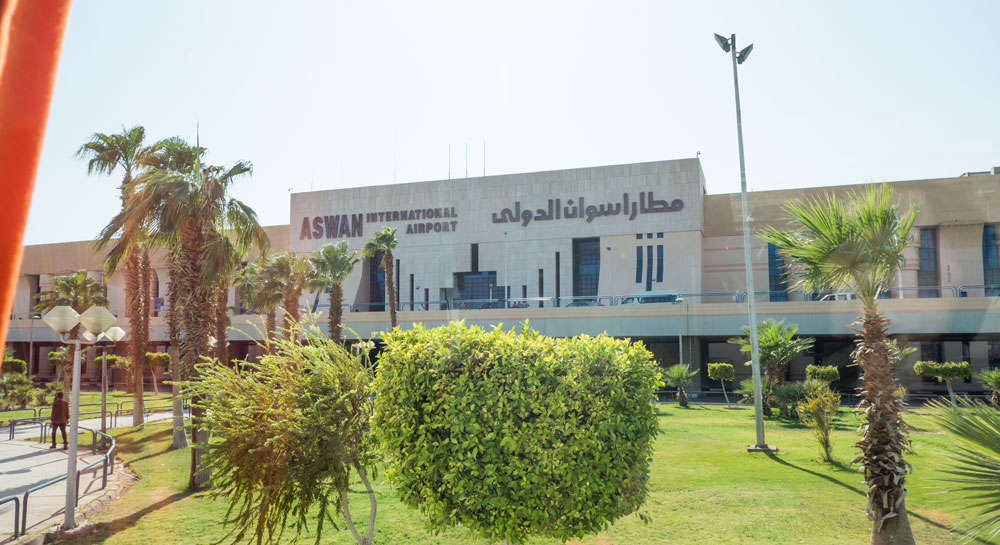
The Aswan airport was well organized - but it was not as busy as the Cairo airport. Security was good and well organized. There were two security checkpoints that we had to go through. For some reason, I didn't take any pictures inside the airport.
Soon, we loaded onto the bus and were taken to our plane.

It's an Embraer 170.
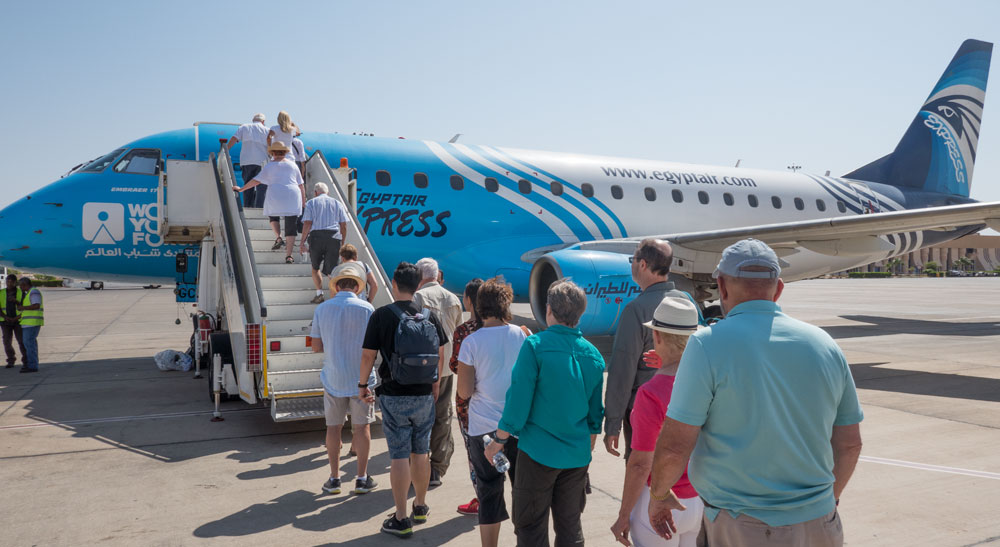
Nice plane, only two seats per side.
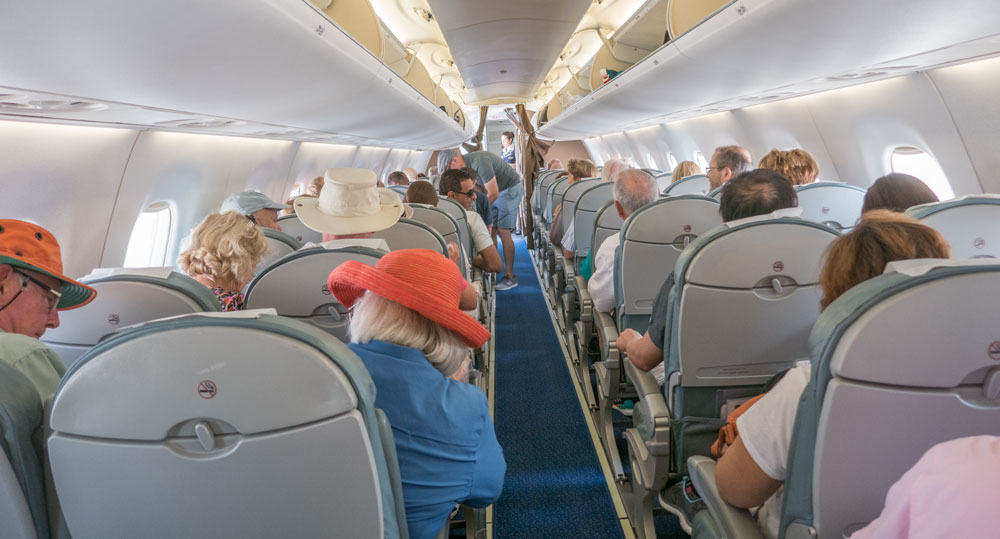
We arrived safely at Abu Simbel. This airport mainly serves visitors to the Abu Simbel temples - there's not a lot else around this location. It's a small airport, and the town itself is mainly involved with fishing or agriculture.
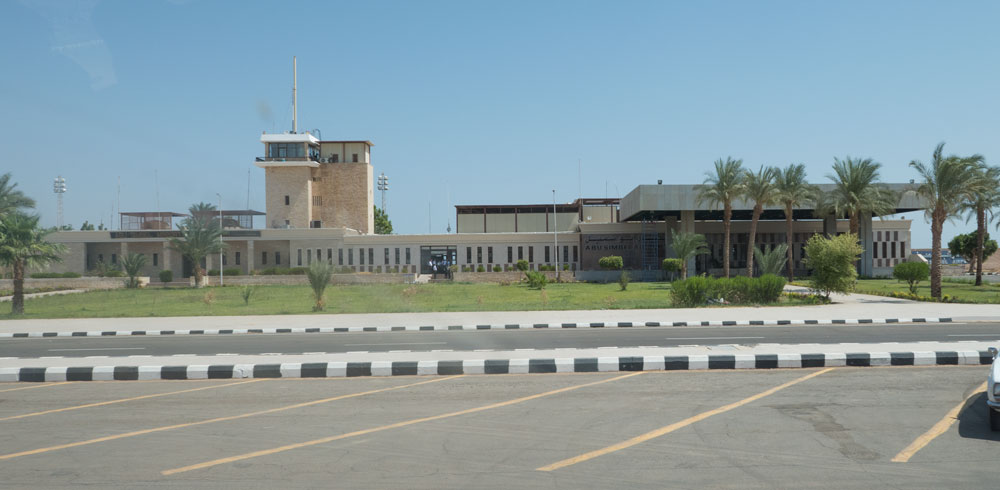
The airport bus took us to the Abu Simbel temples. Once we processed through the reception center, and purchased our camera tickets (300 Egyptian pounds each), we walked to the temples. They face Lake Nasser. Here's the front of the big temple, built by Ramses II (also spelled Ramesses II), one of the many structures built by him throughout the country as a reminder to his people of his rule.
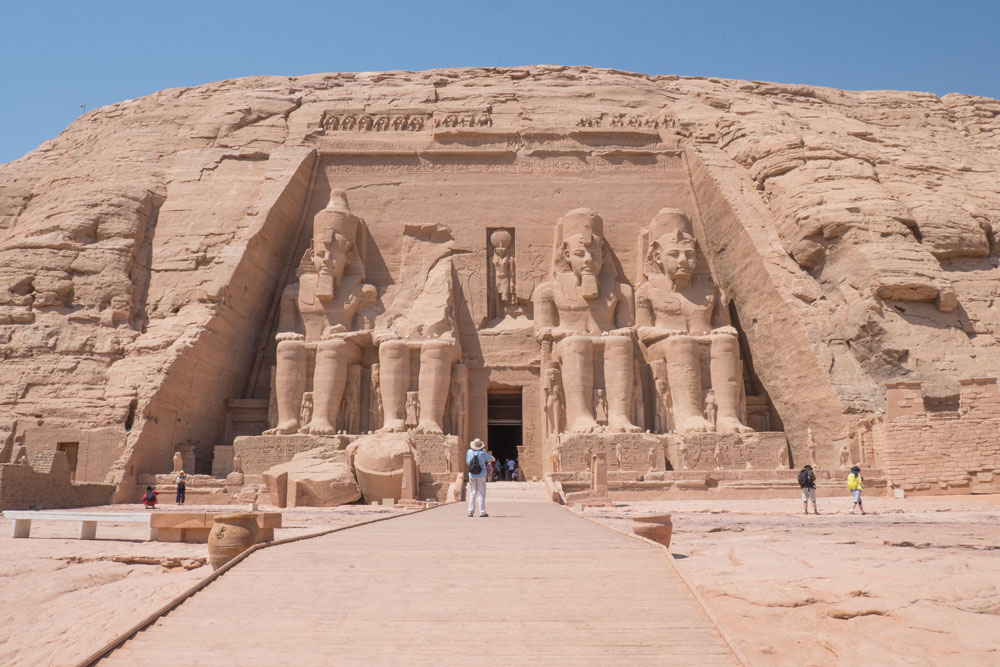
The statues to the right.
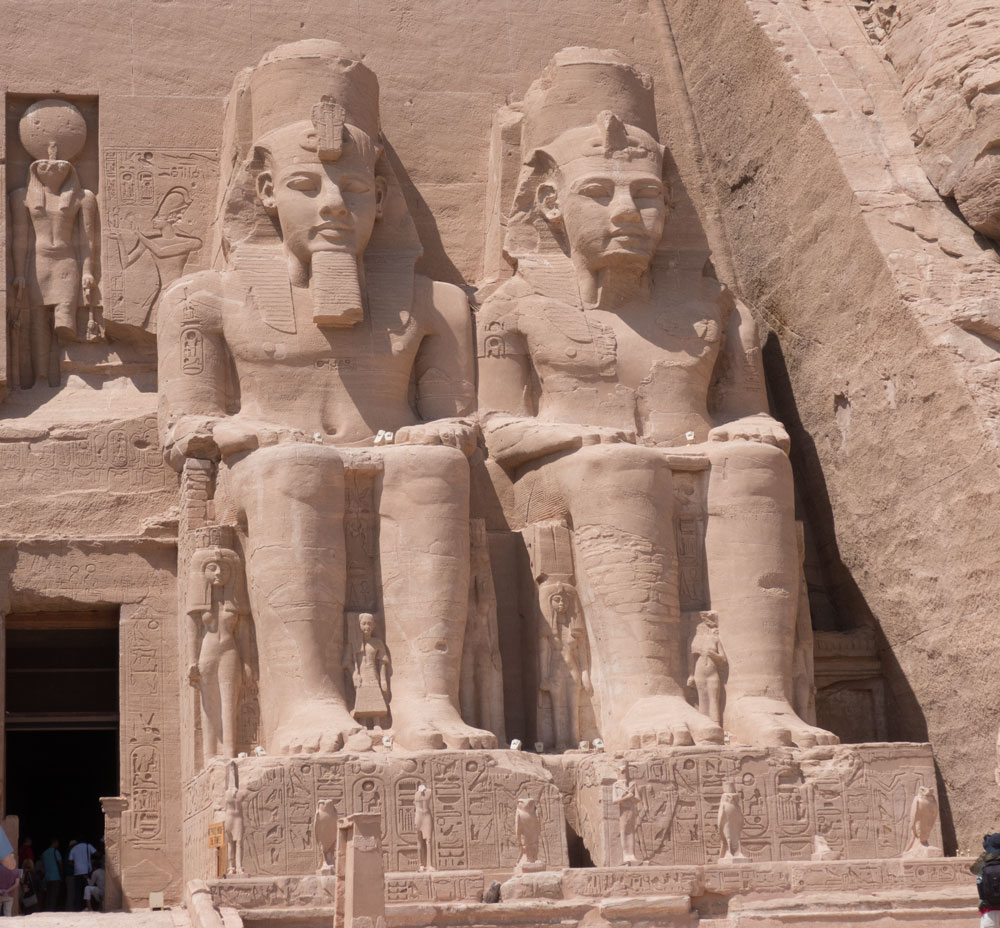
And to the left. The broken statue failed during an earthquake many years ago and when they moved the temple, the decision was to leave it this way.
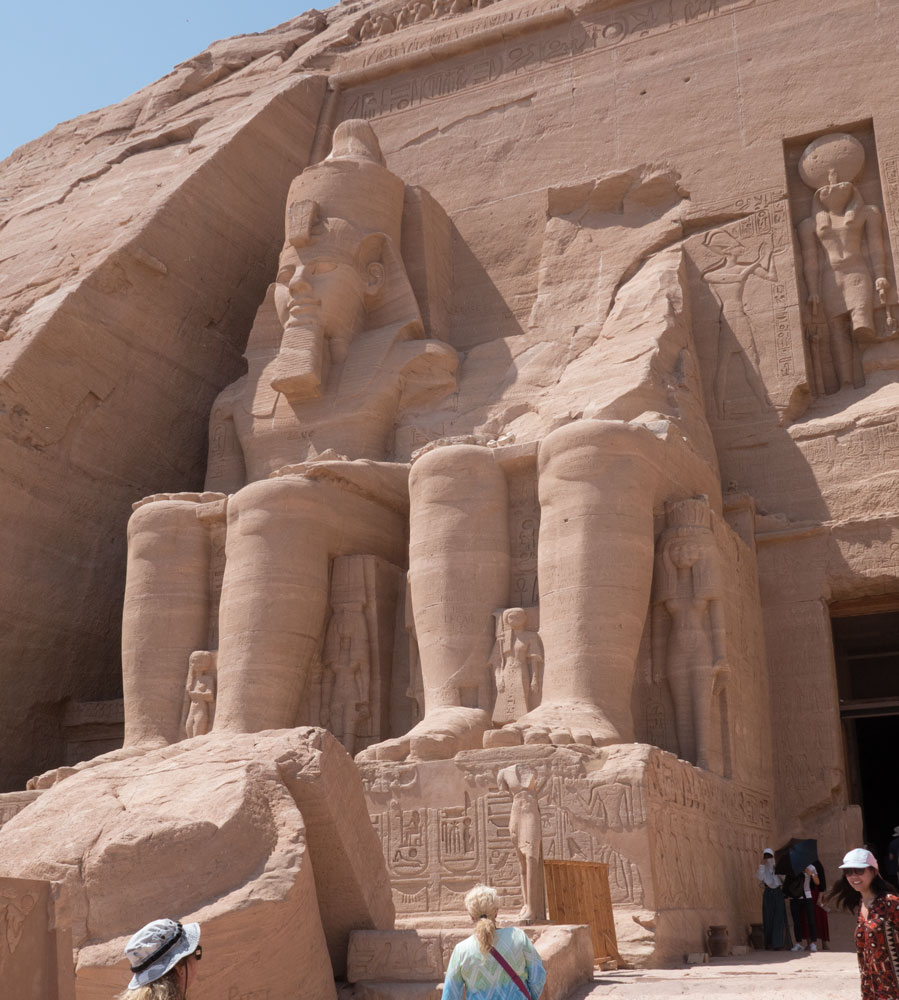
Entering the temple there is a row of statues of Ramses II on both sides.
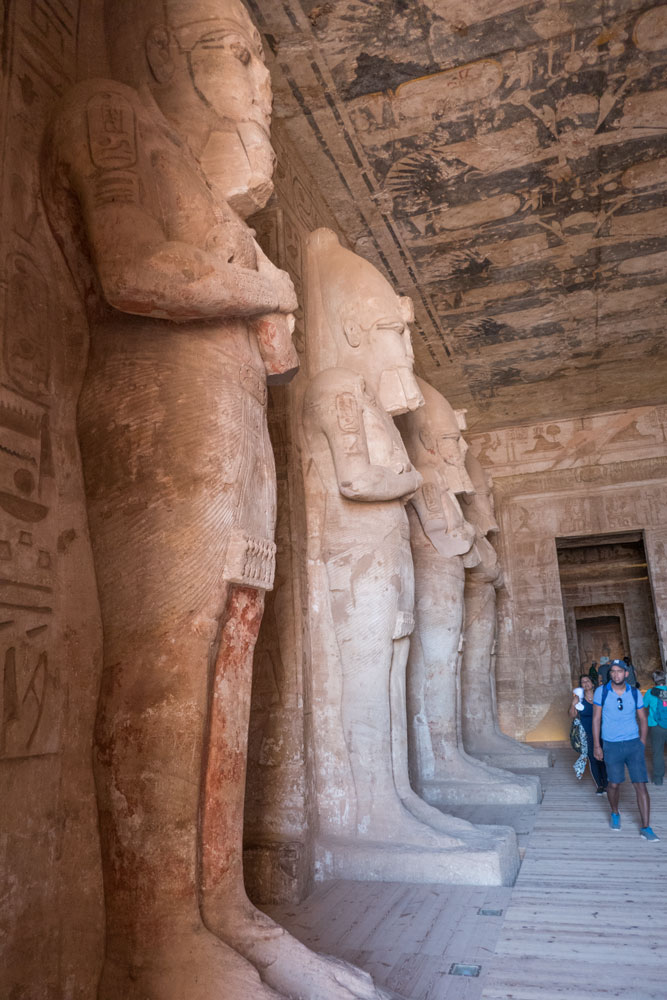
Looking back further into the temple.
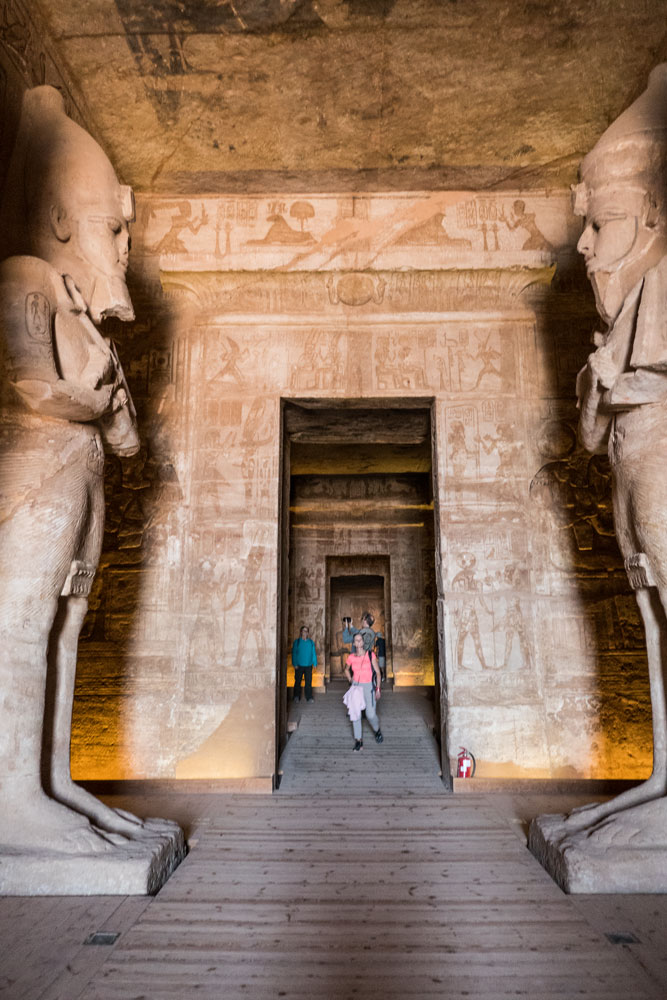
The inner sanctuary is oriented so that direct sunlight will shine on the three statues on the right, only on two days of the year. The statue on the left represents night, so is never lit by the sun.
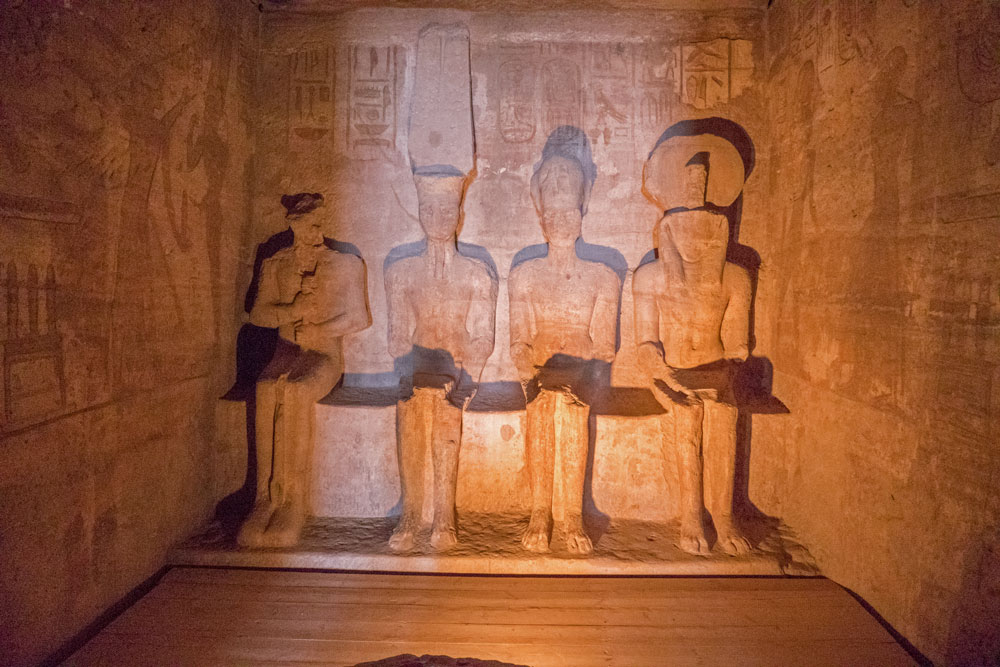
Wall decorations. I'm afraid I don't know the meaning of these decorations, but they often represent offerings to the gods or are symbols of power.
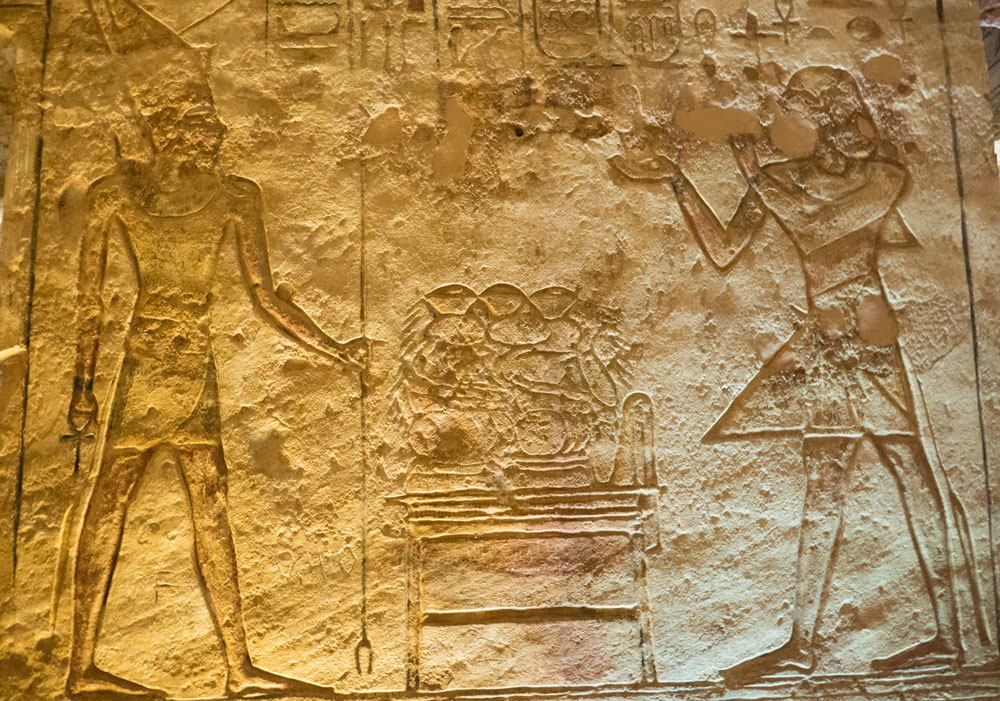
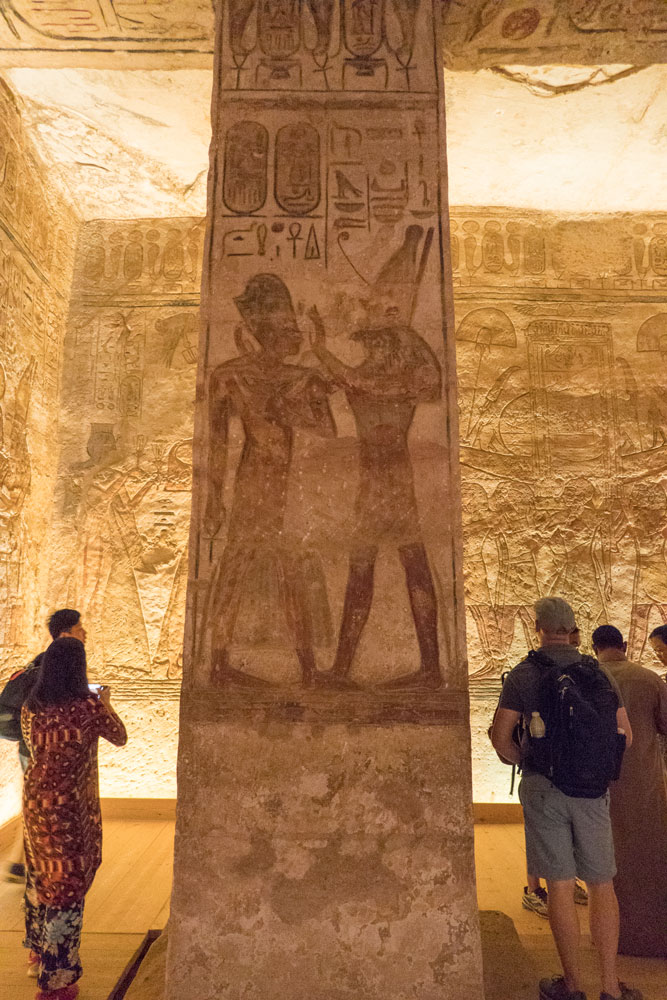
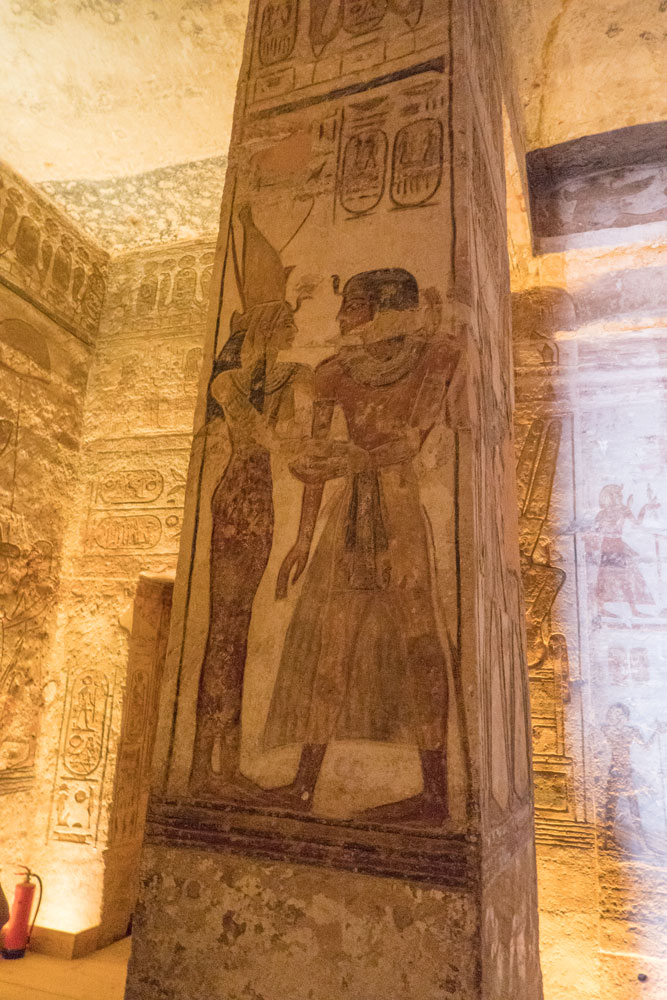
This is an offering to the gods.

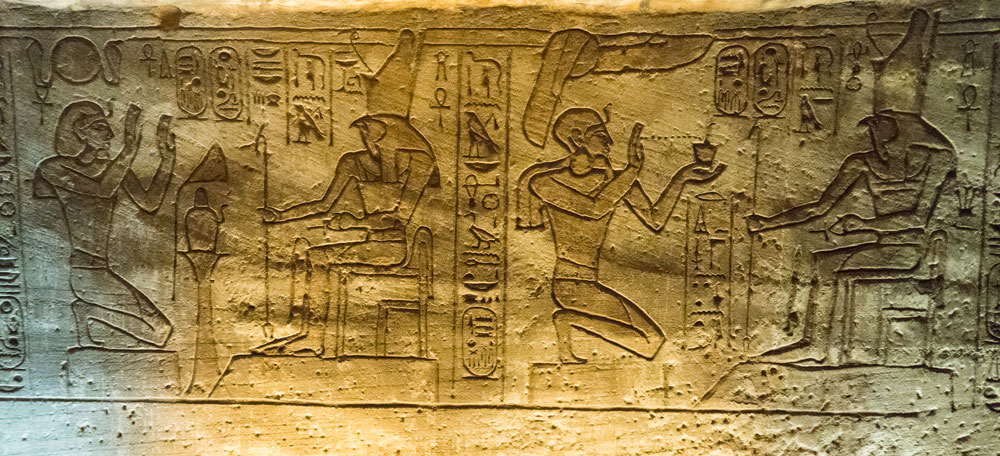
Ramses II smiting his enemies.
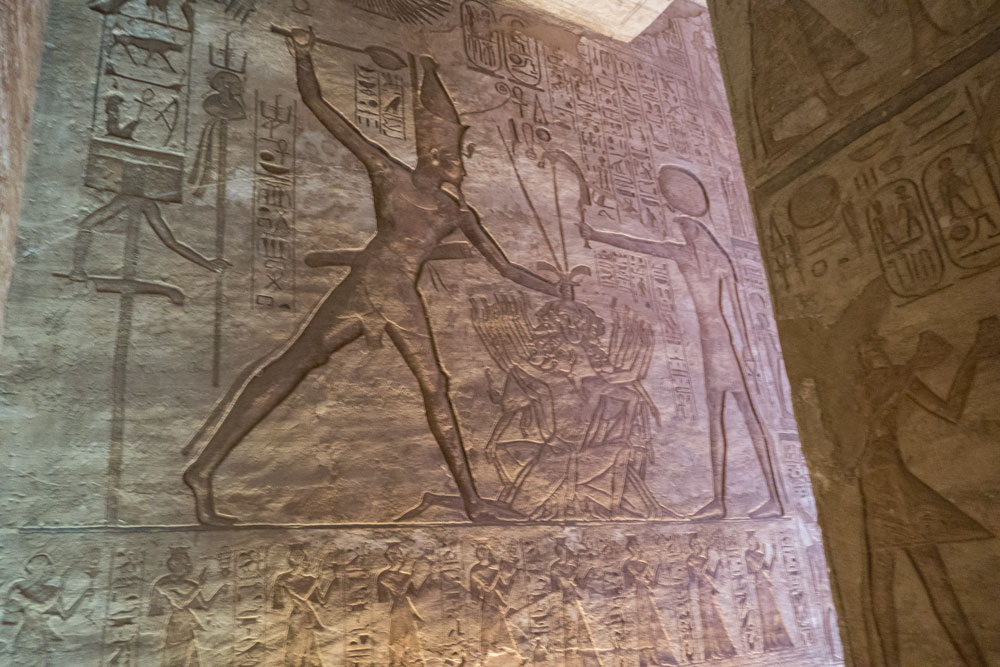
I took a lot of pictures of the wall decorations but you'd be bored silly if I were to post all of them.
Next, I went to the small temple, built by Ramses II for his most beloved wife, Queen Nefertari.
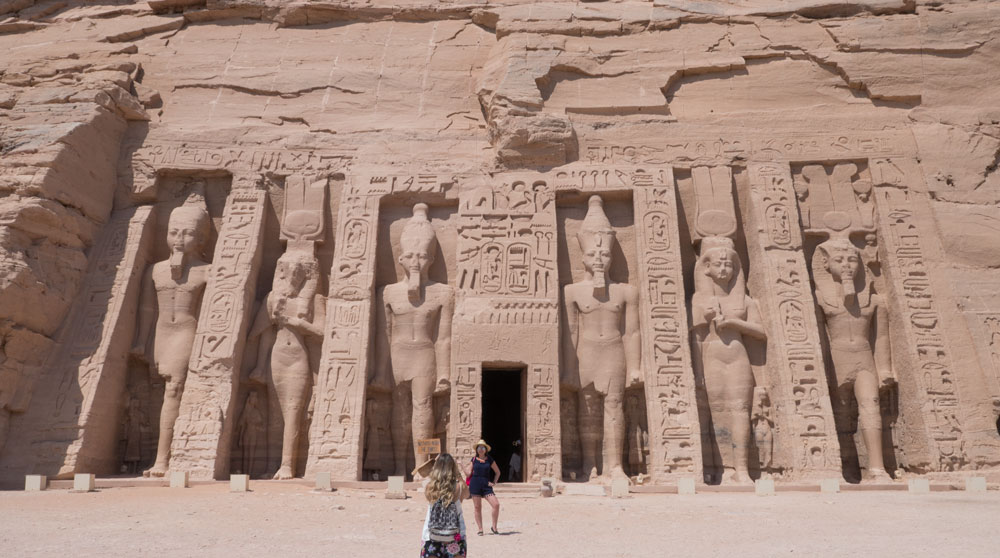
The figures to the right of the entrance.
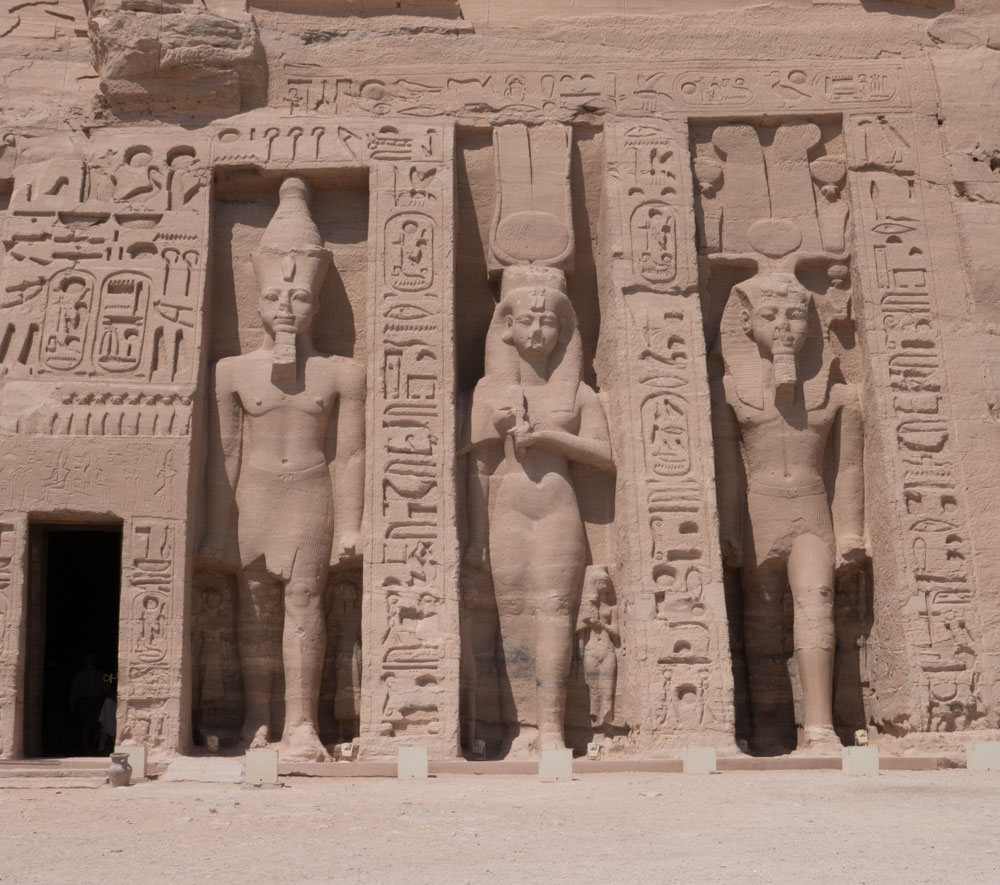
And the figures to the left.
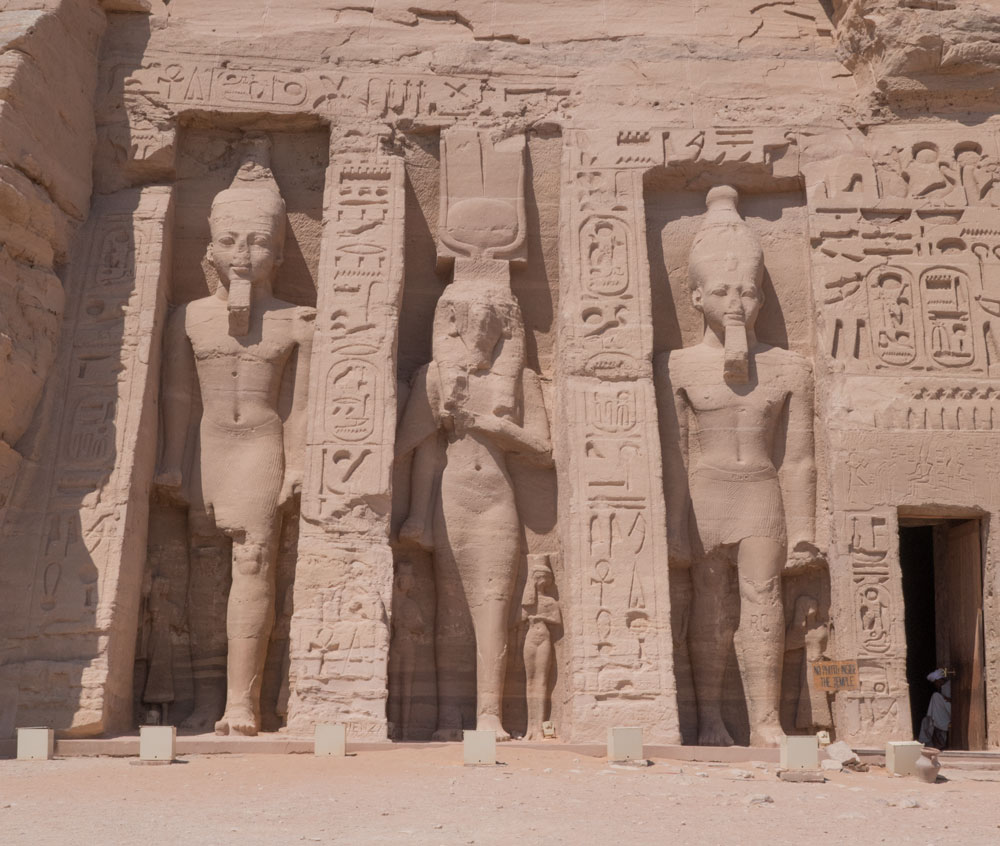
Lots of undamaged wall decorations in this temple.
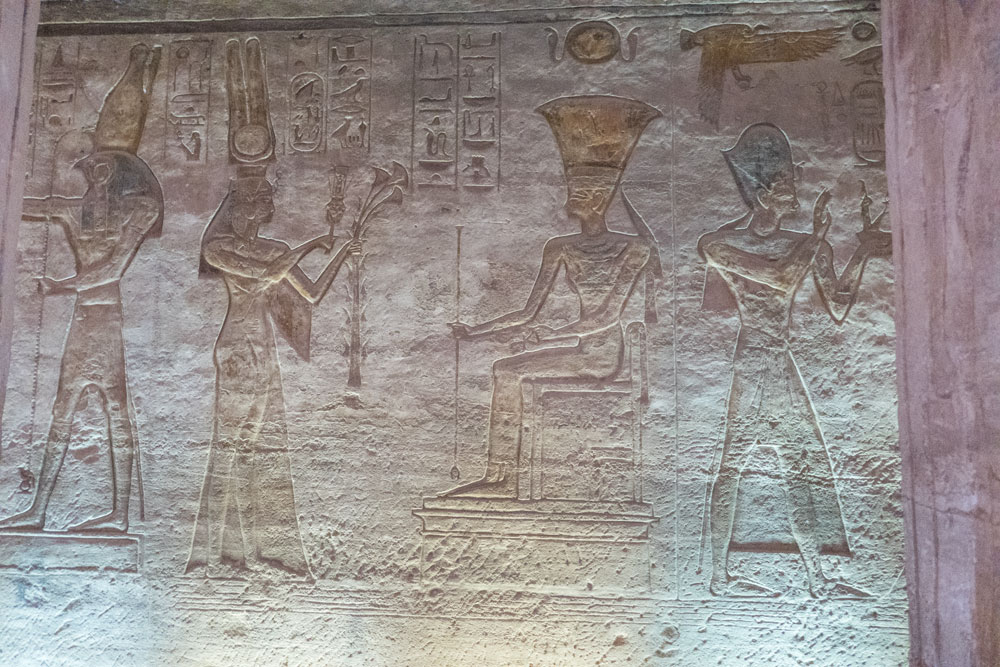
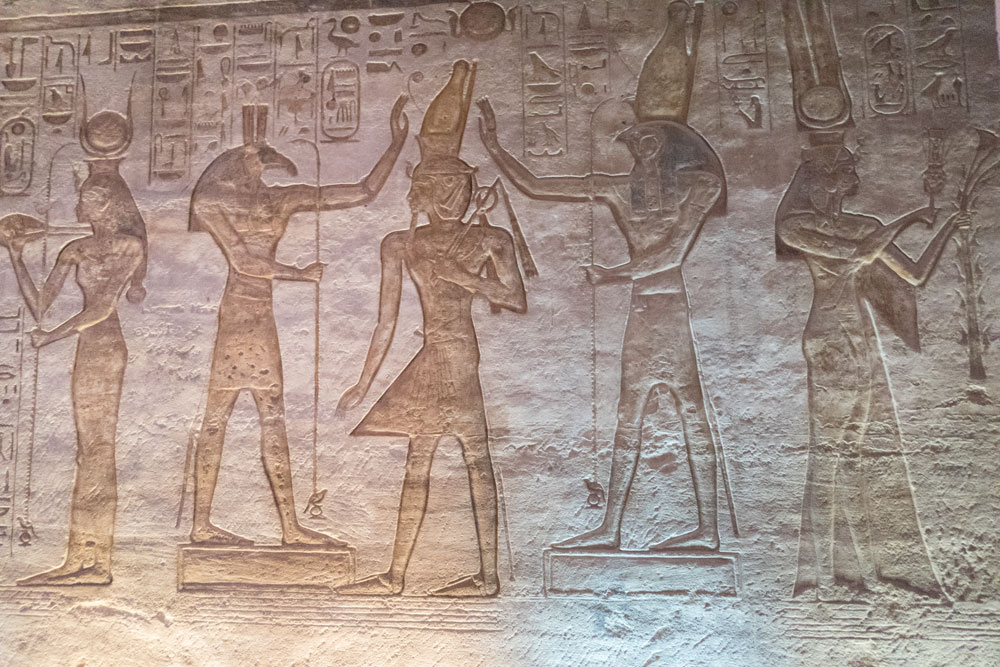
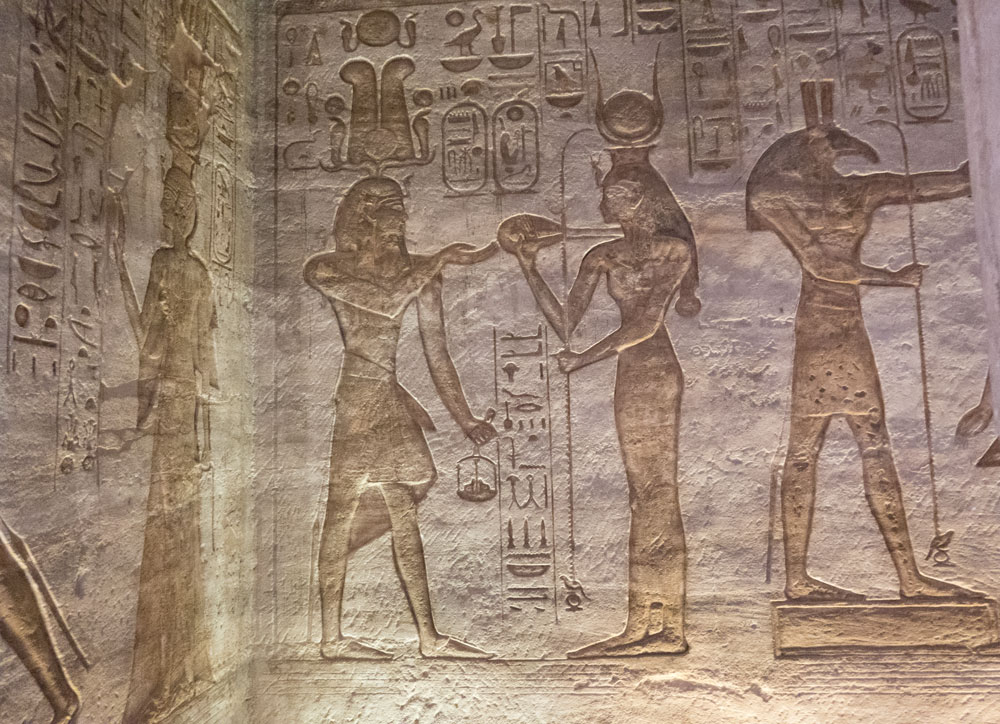
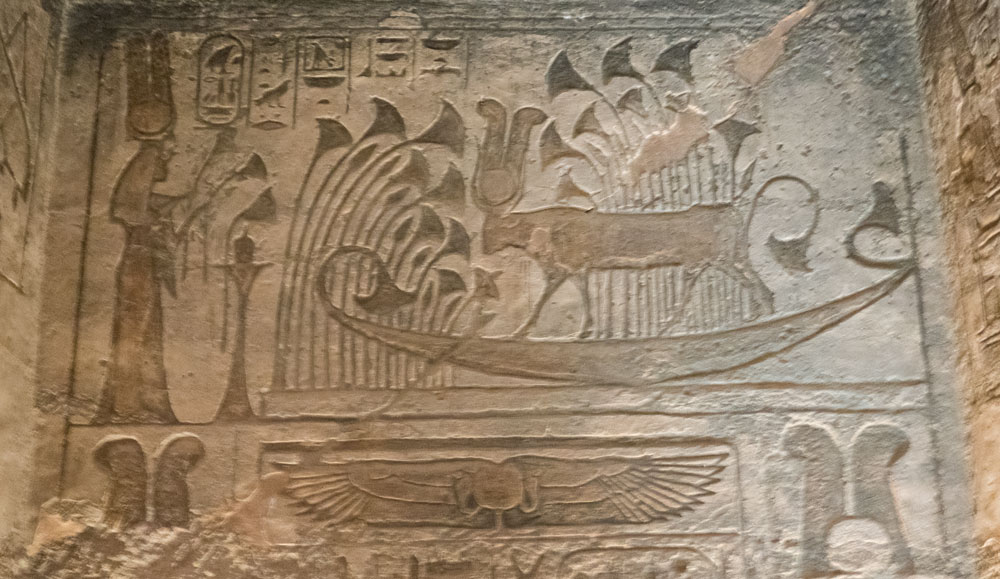
This scene is similar to one in the big temple.
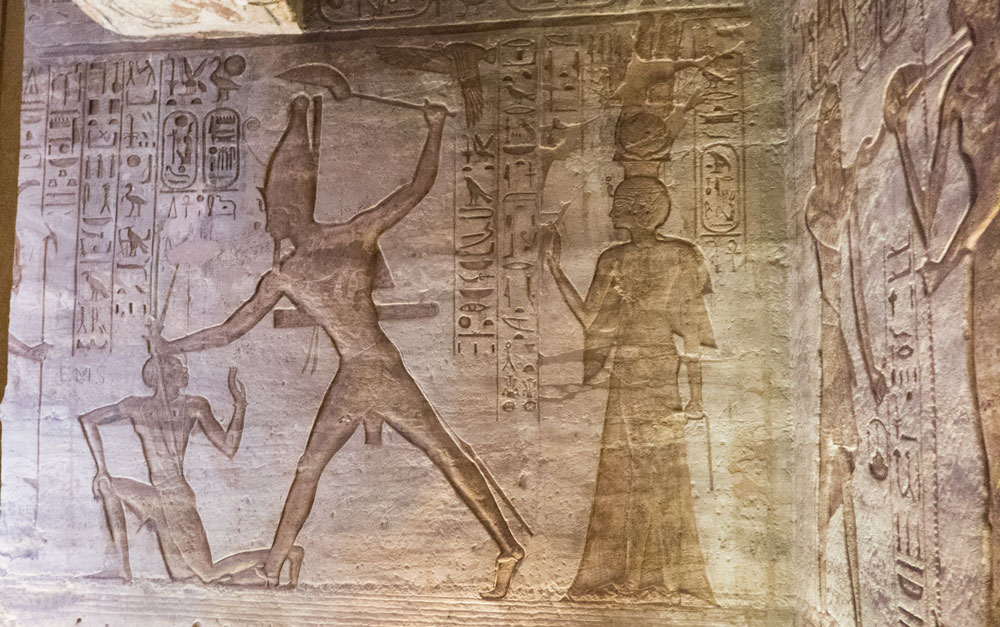
All Egyptians at this time were tall and thin:-)
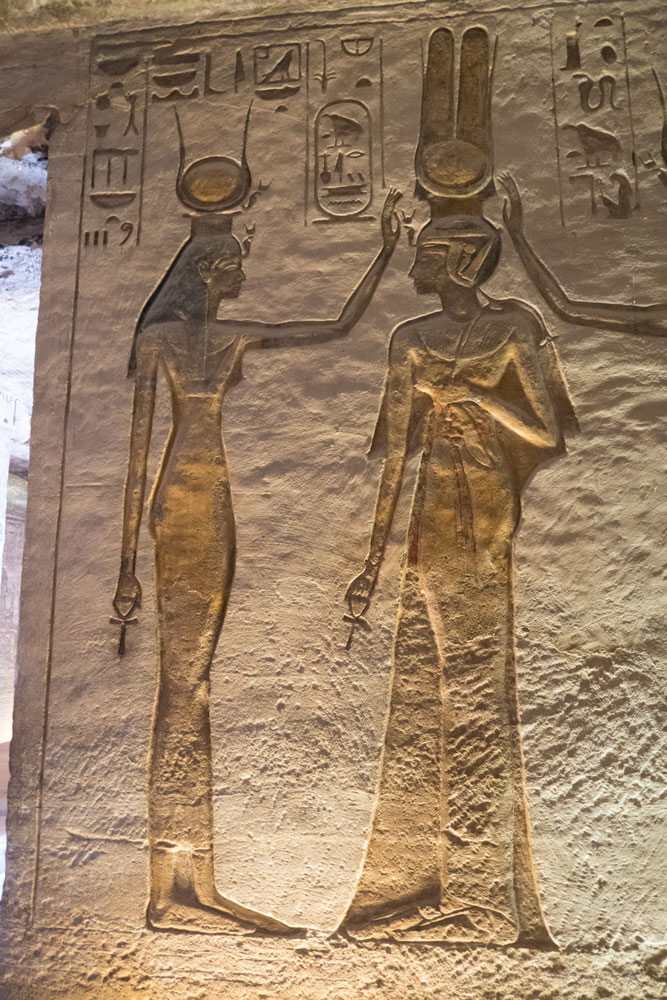
Judy and I in the small temple. Did I mention that it was HOT?
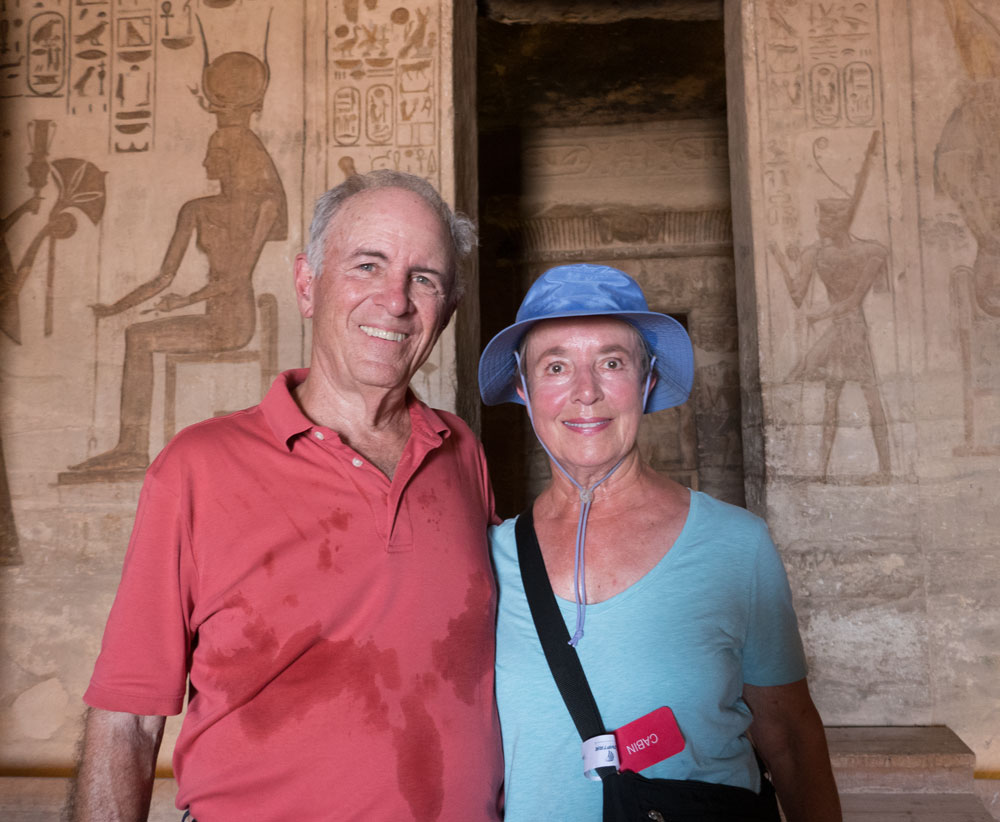
This picture is of the guard at the small temple. Note the mark on his forehead, called a zebibah (raisin). It's a sign that he's a pious Muslim. It comes from years of putting his forehead down on the prayer rug during daily prayers.
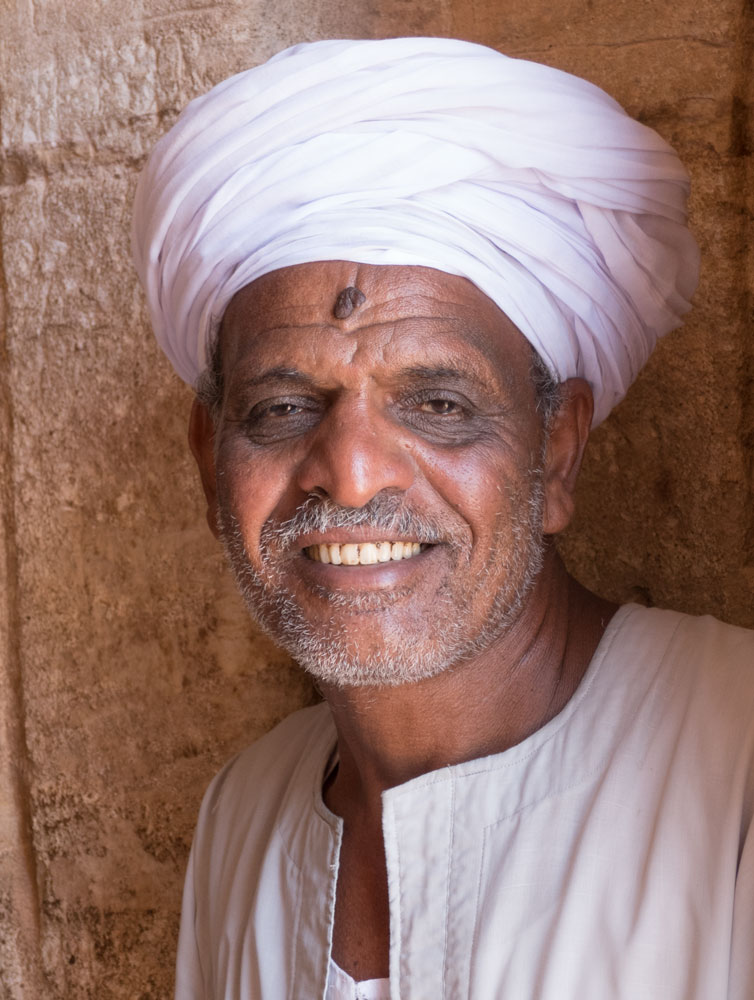
Then it was back to the Abu Simbel airport and our flight to Aswan - another Embraer 170. We were back at the boat about 3pm and took a shower and changed clothes.
That evening we had a candle light dinner, and most people dressed up. It was so dim that people were using the light on their smartphones to read the menu, but they finally turned the lights on enough for us to see.
And that was another day on the Nile.
10/7/2018 (Sunday) We sailed from Aswan to Esna (north, or downstream) today, arriving at Esna a bit after 9am. Our excursion this morning is to the Temple of Esna.
The majority of the temple is below grade but it has been excavated. To reach it, you must negotiate some fairly steep steps.
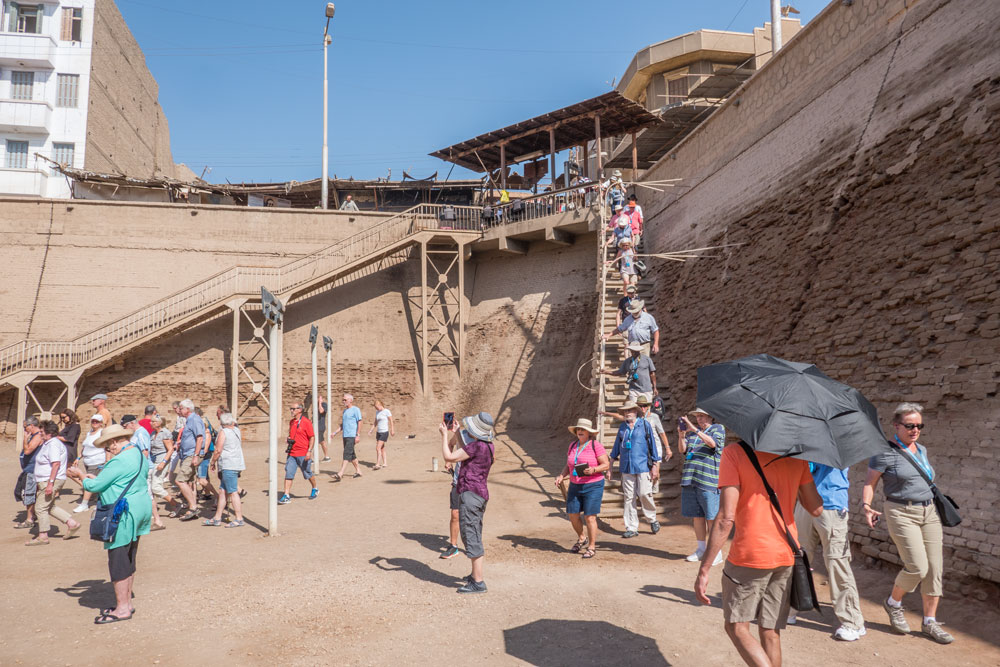
Here's a view of the temple from the top of the steps.
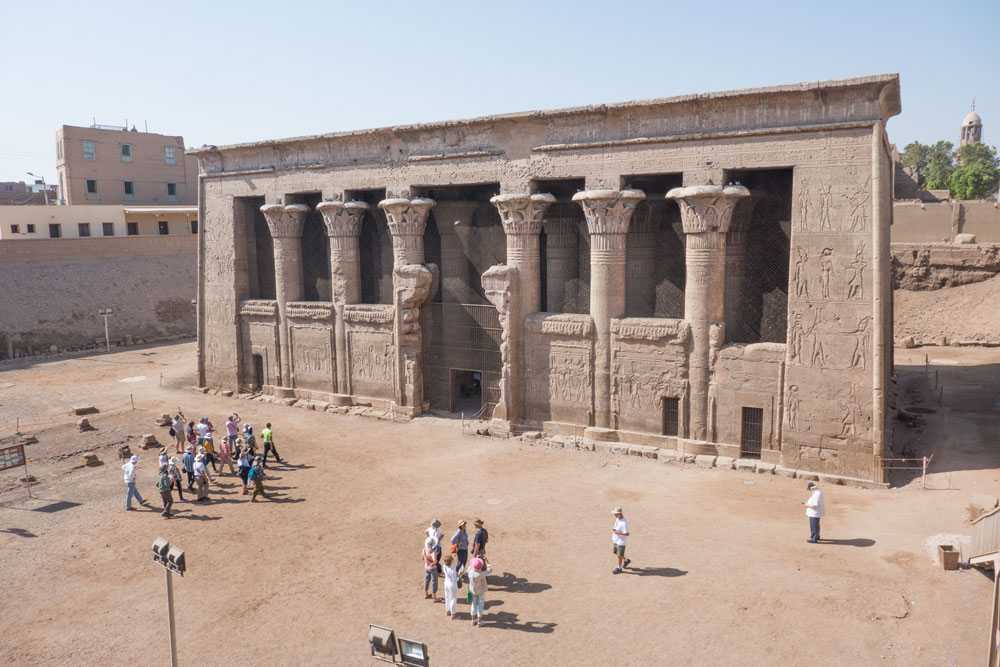
Some of the relief decorations on the front of the temple.
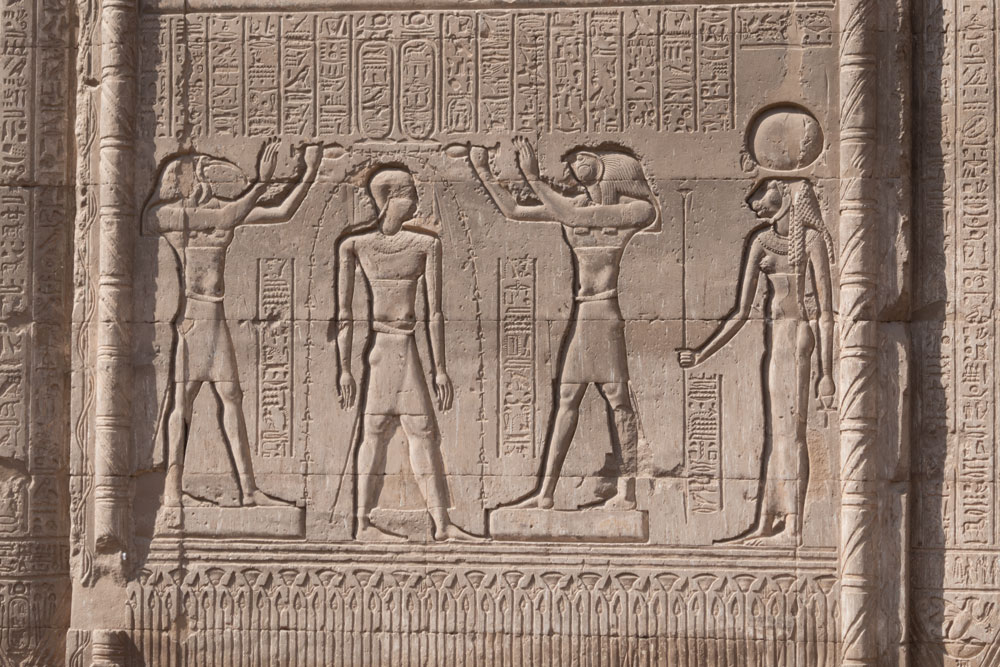
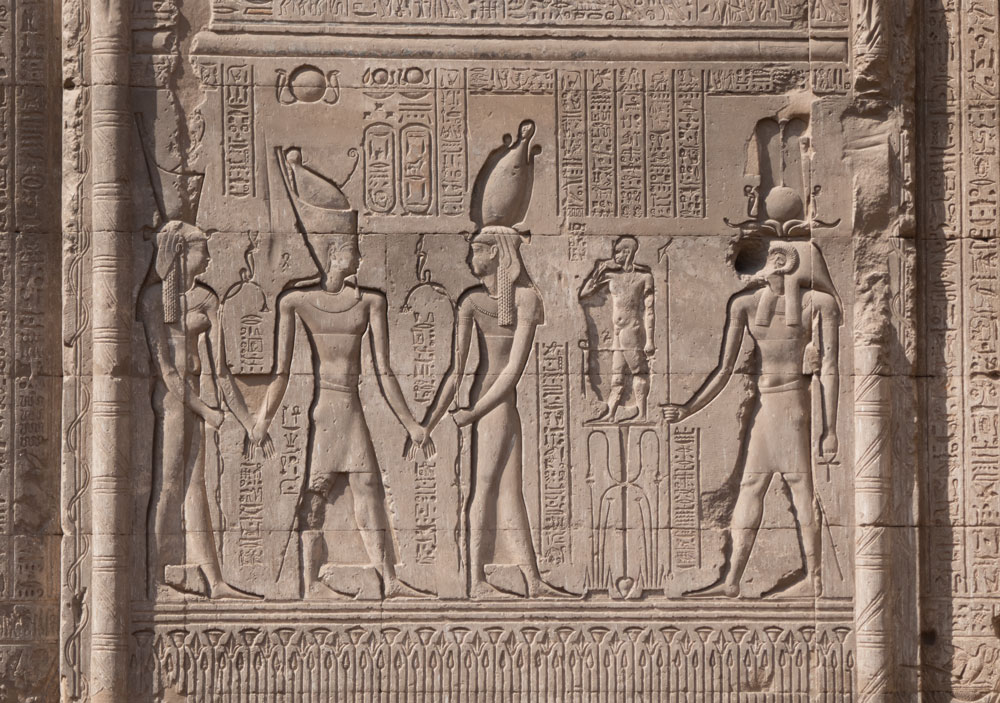
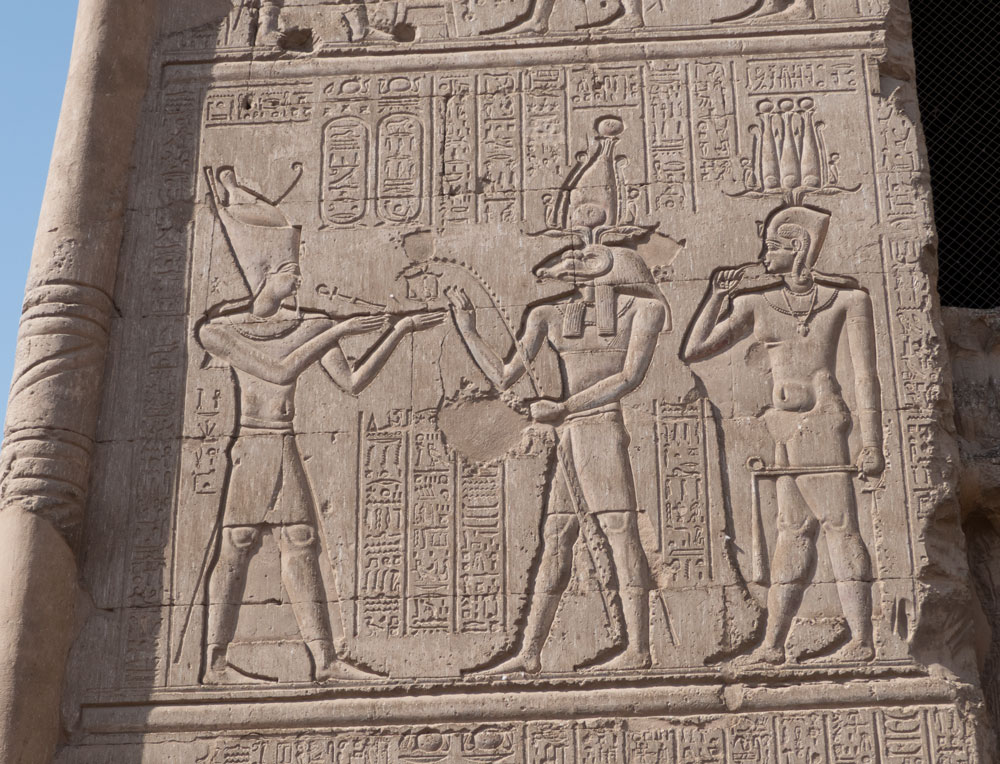
The temple is not very deep. This is what you see just as you enter.
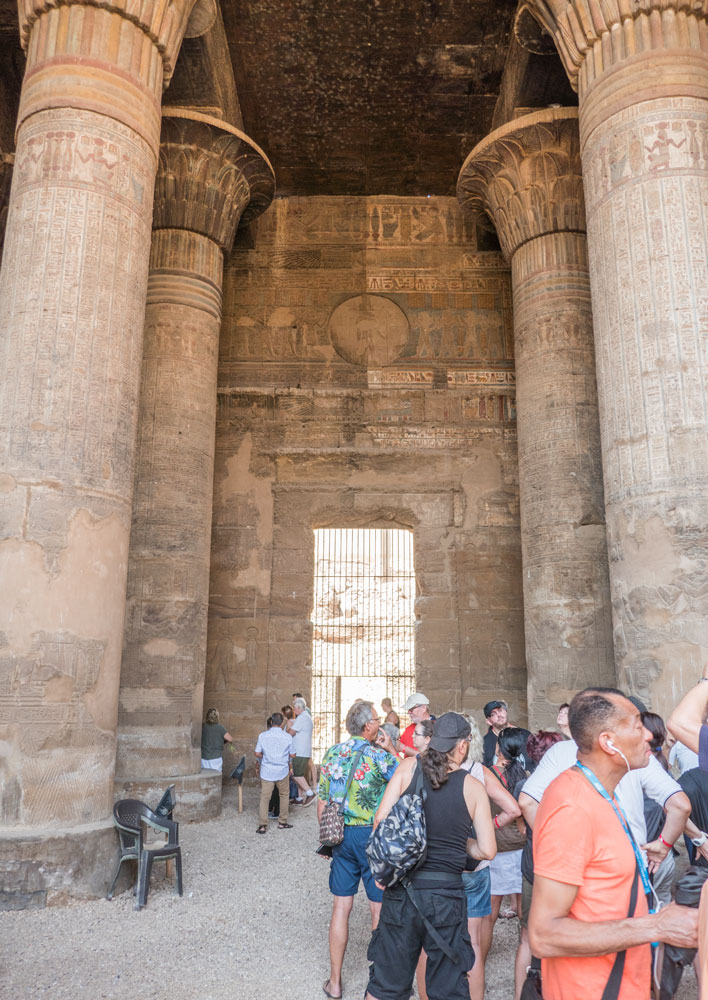
Some reliefs on the ceiling.
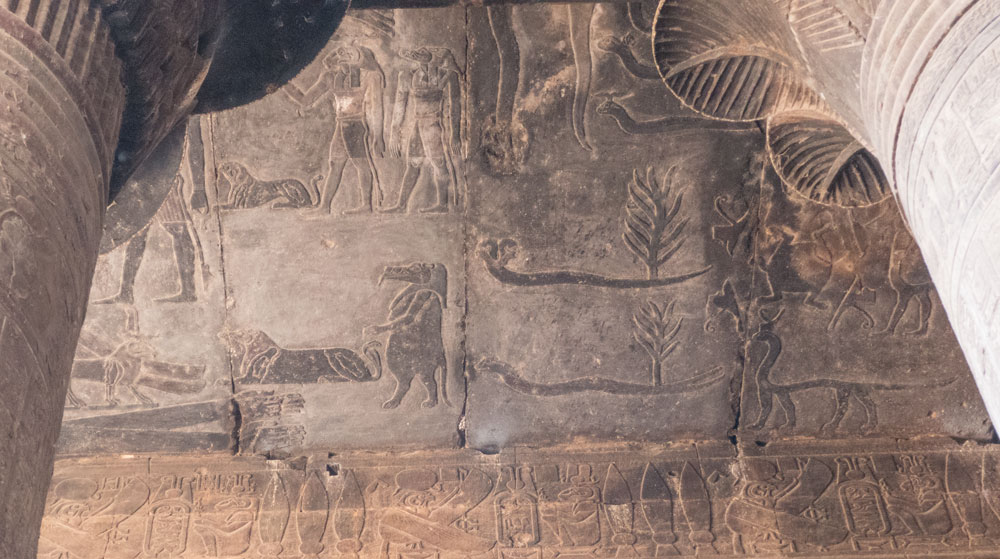
And on the walls.
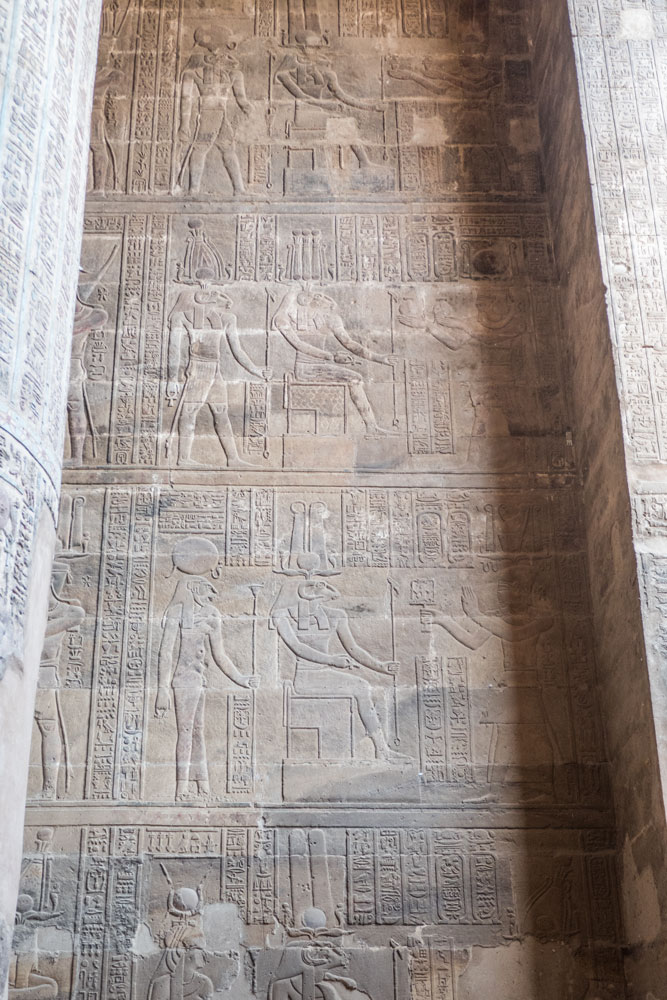

An offering to the ram-headed god.
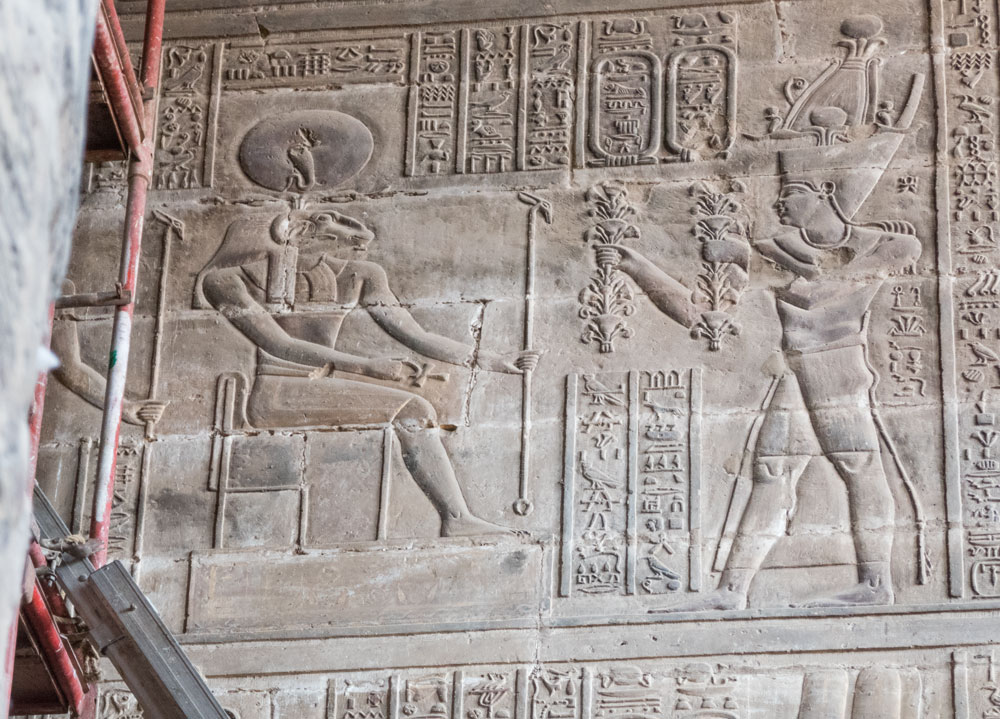
More wall decorations. It's amazing that the colors survived.
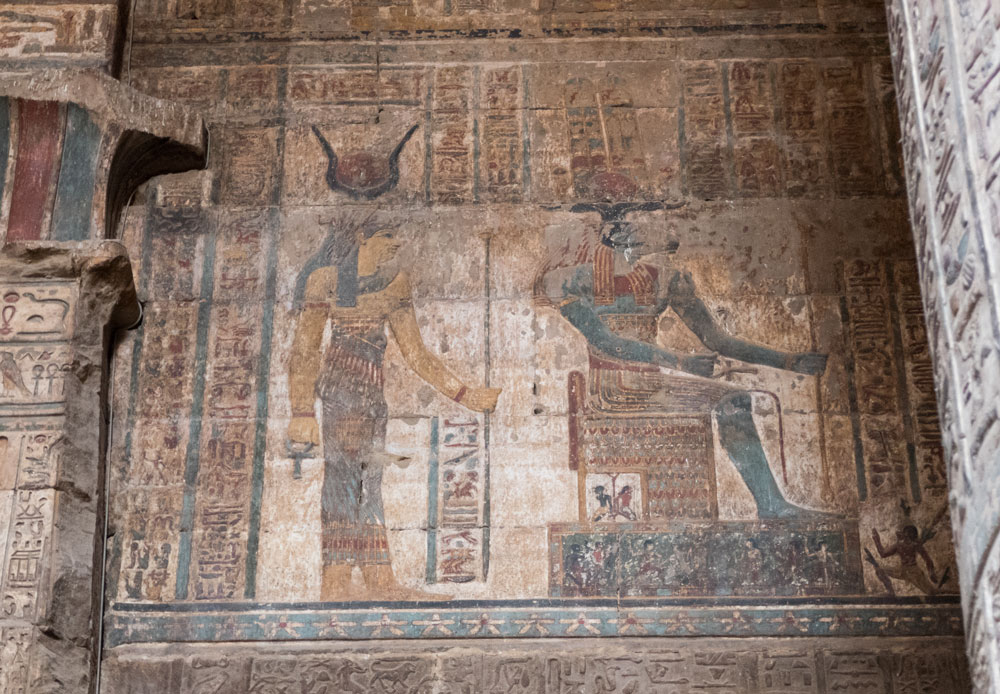
Figures on the outside of the temple.
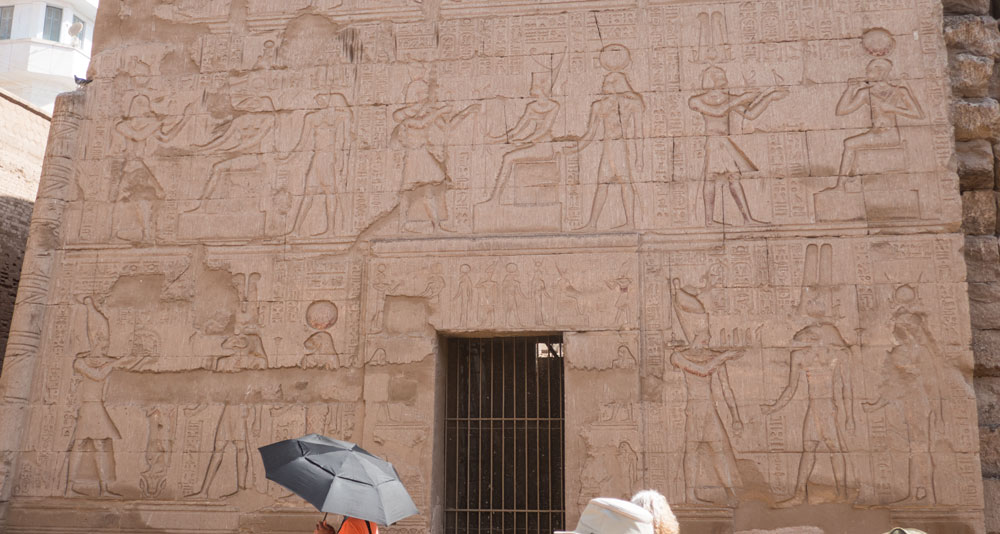
This is the usual figure of the pharaoh smiting his enemies.

Then our guide, Hani, took us on a walking tour of the town of Esna. He pointed out that Esna is one of the poorest towns in Egypt. Note the guy on the left side of the picture packing a pistol. He's our guard. The people of the town were very, very friendly. I think the guard is more to make us feel safe than to really do anything.
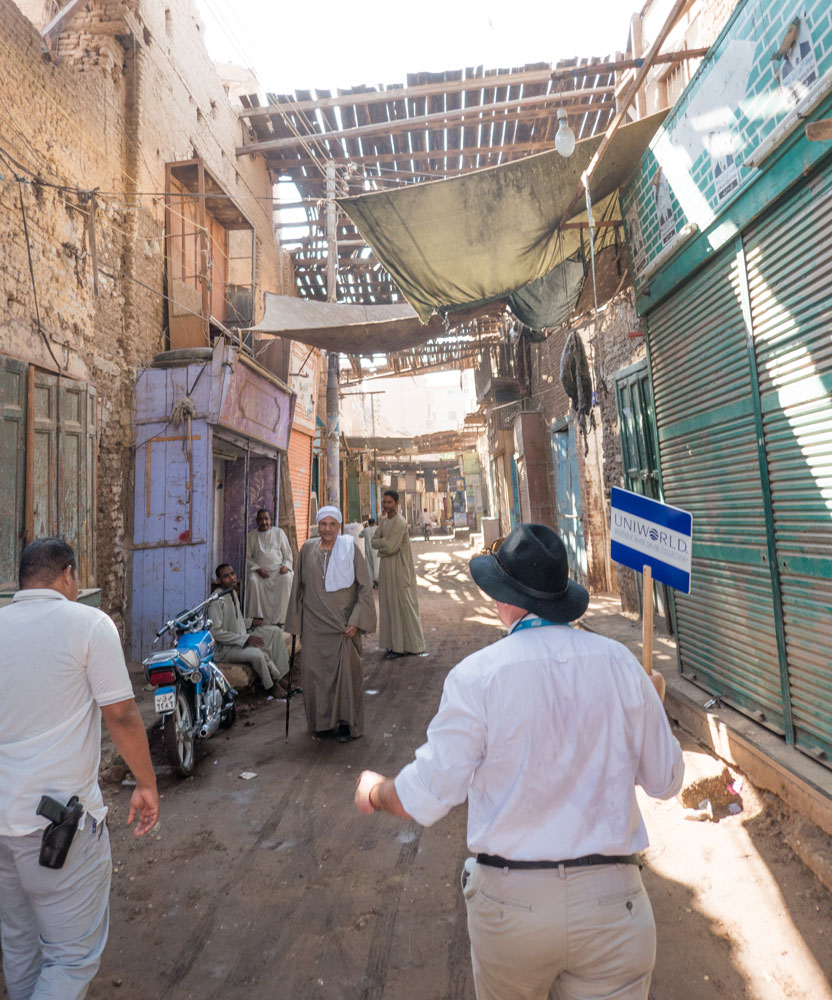
A restaurant. The cook is making falafel.
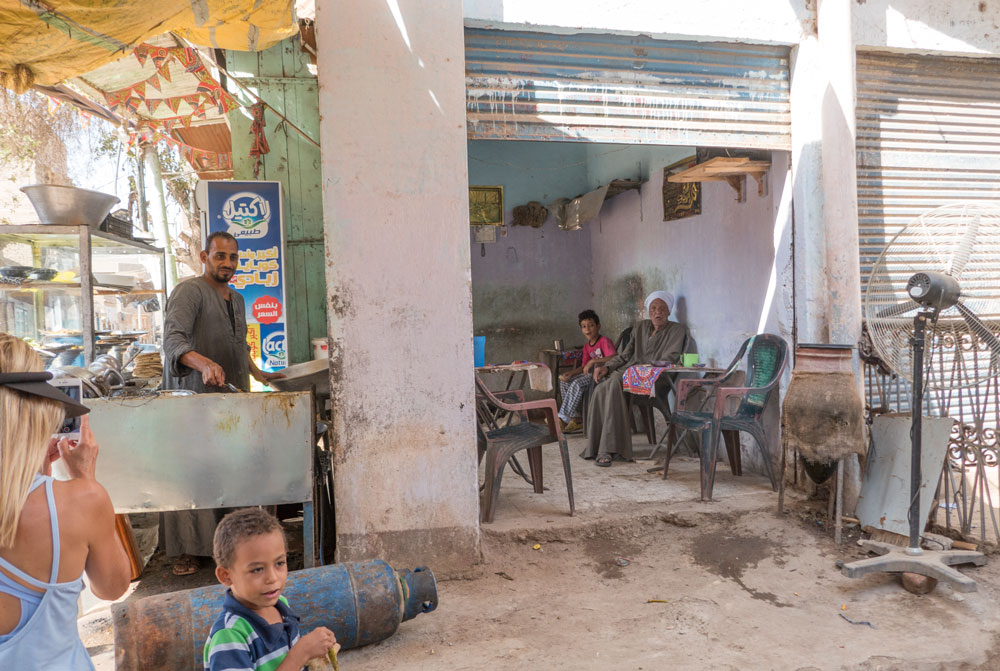
Here's a close up of the cook as he fries the falafel.
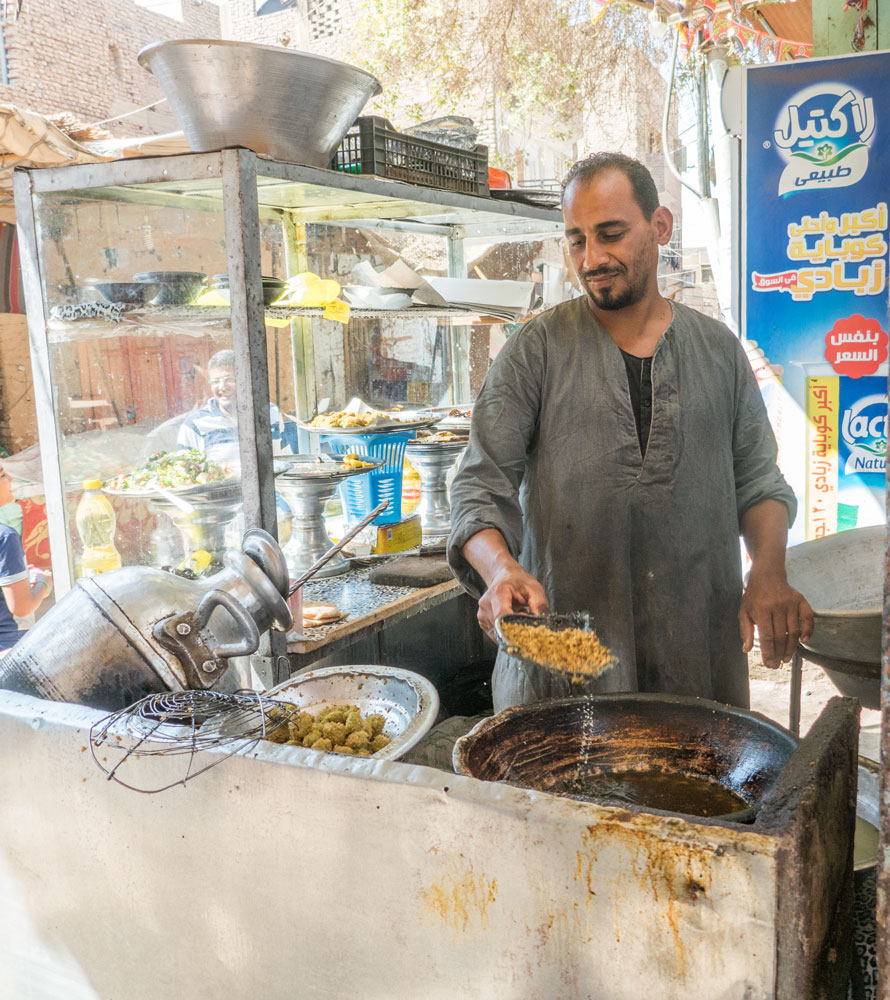
An olive press. This guy pushes that arm around to make the wheel press the olives. Definitely hard, manual labor. Hani said it is one of only two manual olive presses left in Egypt.
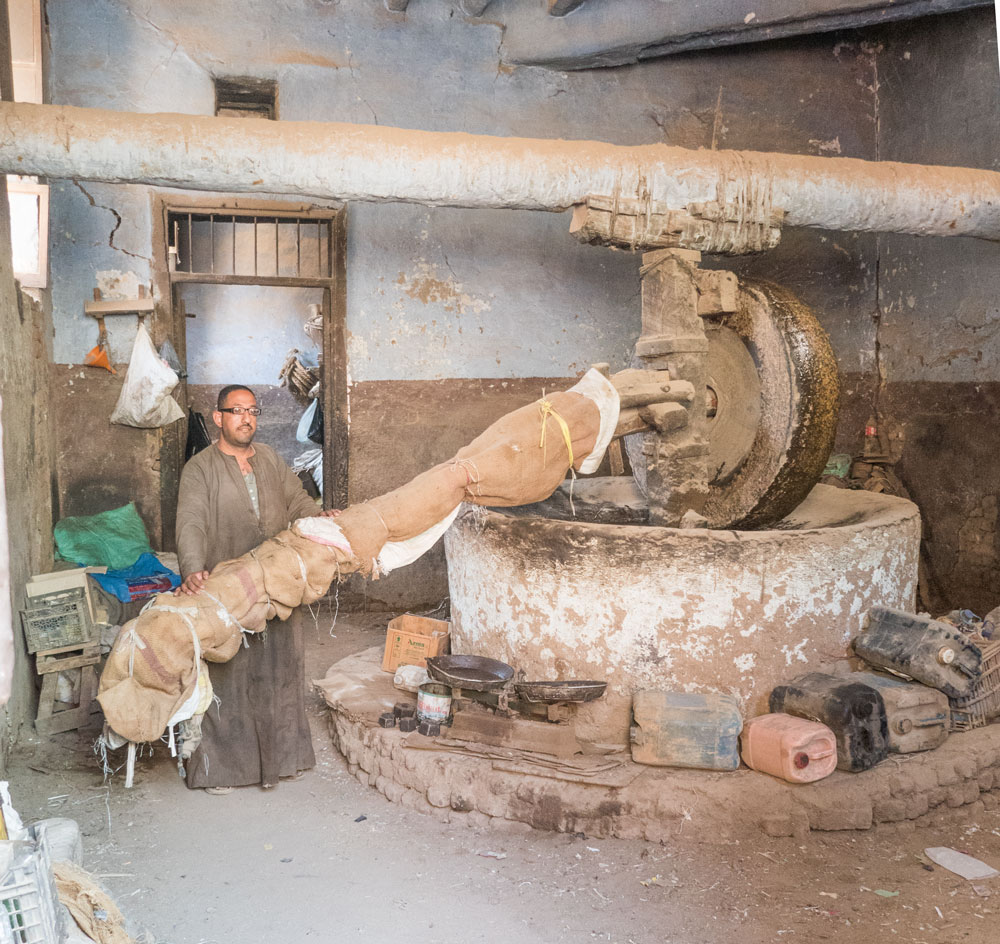
Two old men who serve as guards outside a Coptic church. They're armed with ancient shotguns.
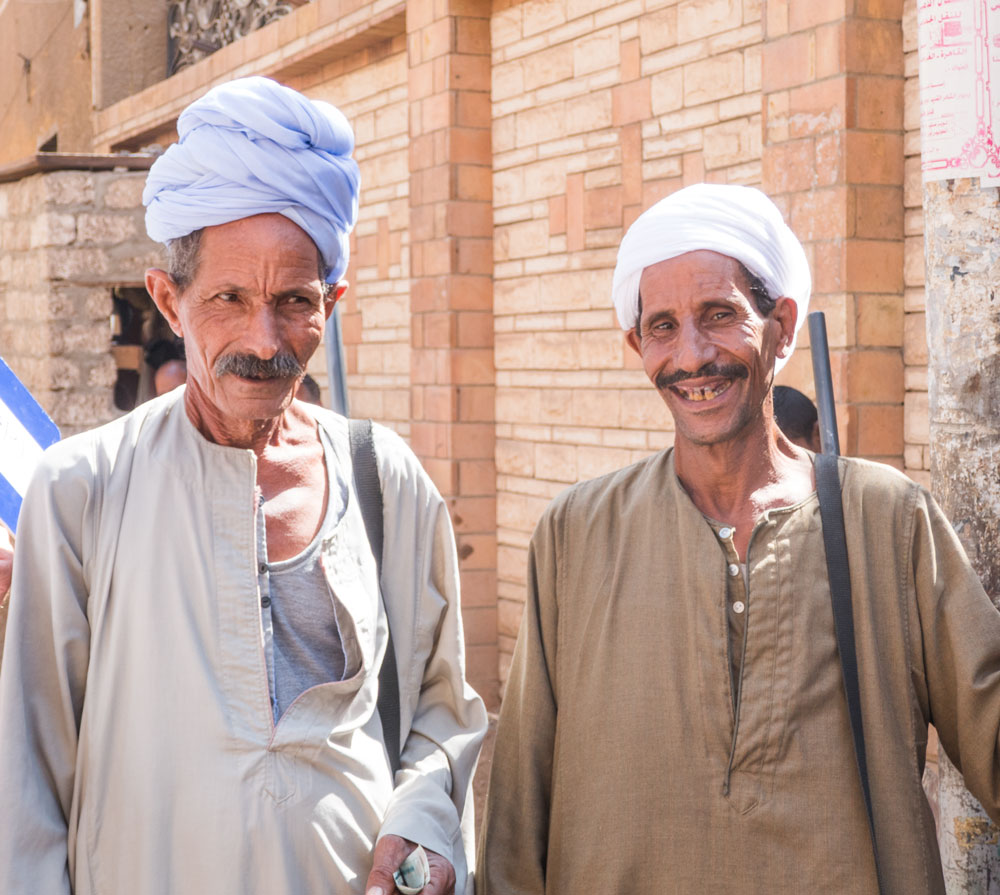
A closer look at them.
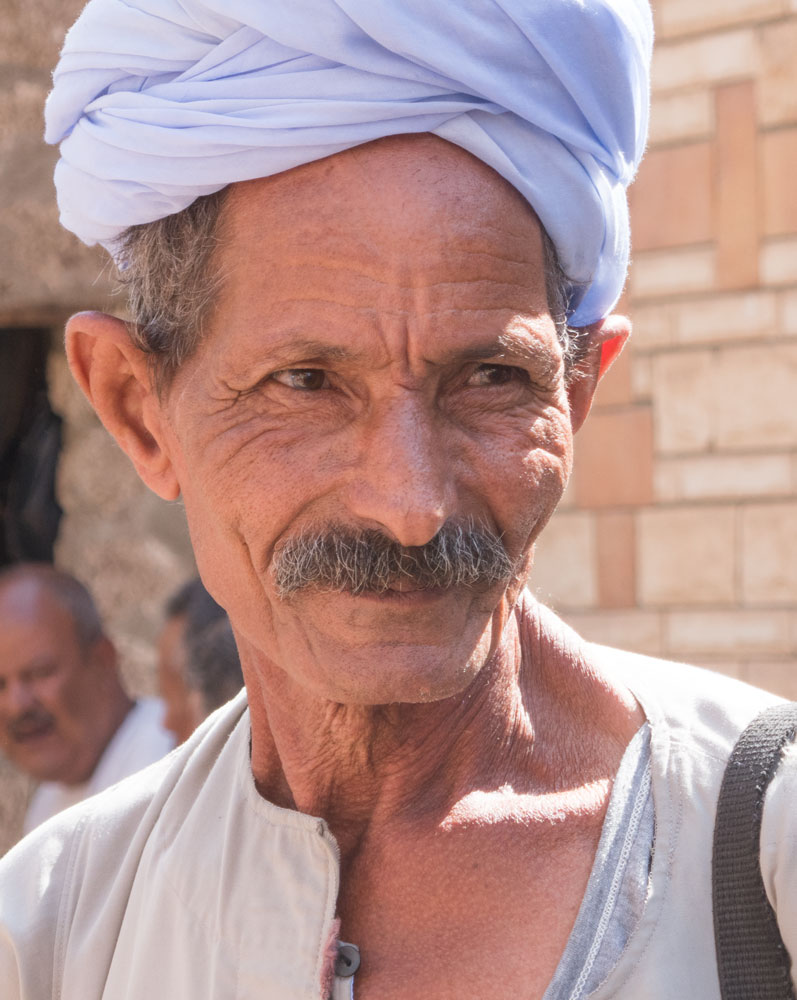

The house of a man who made the Hajj (pilgrimage to Mecca, as required of all Muslims once in their lifetime). It is very prestigious to have made the journey.
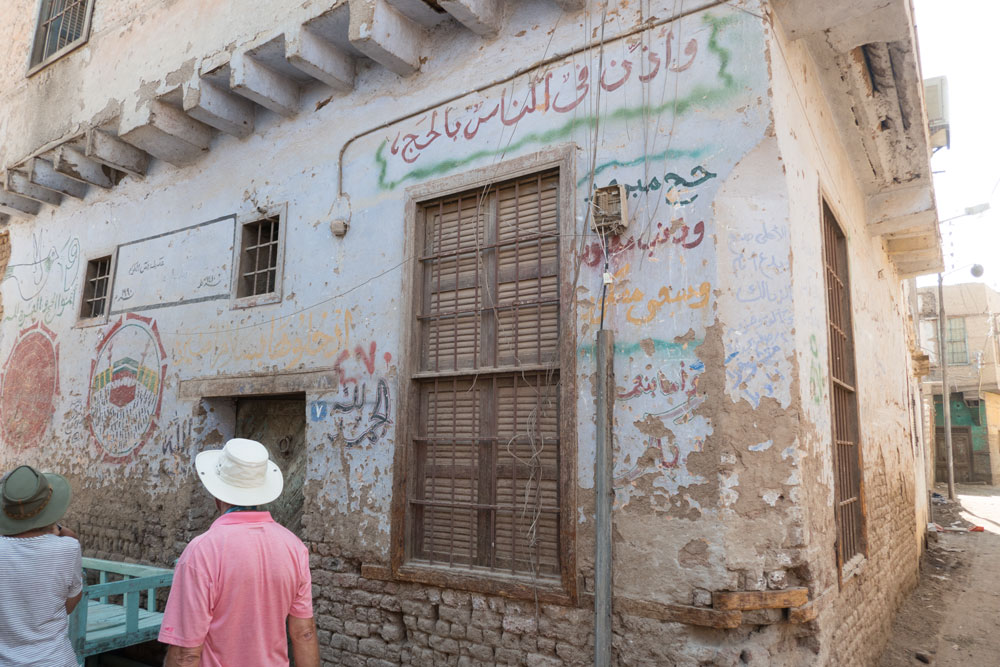
Hani standing by a container of water that is available to anyone who comes by. The provision of water to travelers or those in need is an act of charity, as required by Islam. The shared cup may not be the most sanitary, but if you're thirsty enough, the water will taste very good.
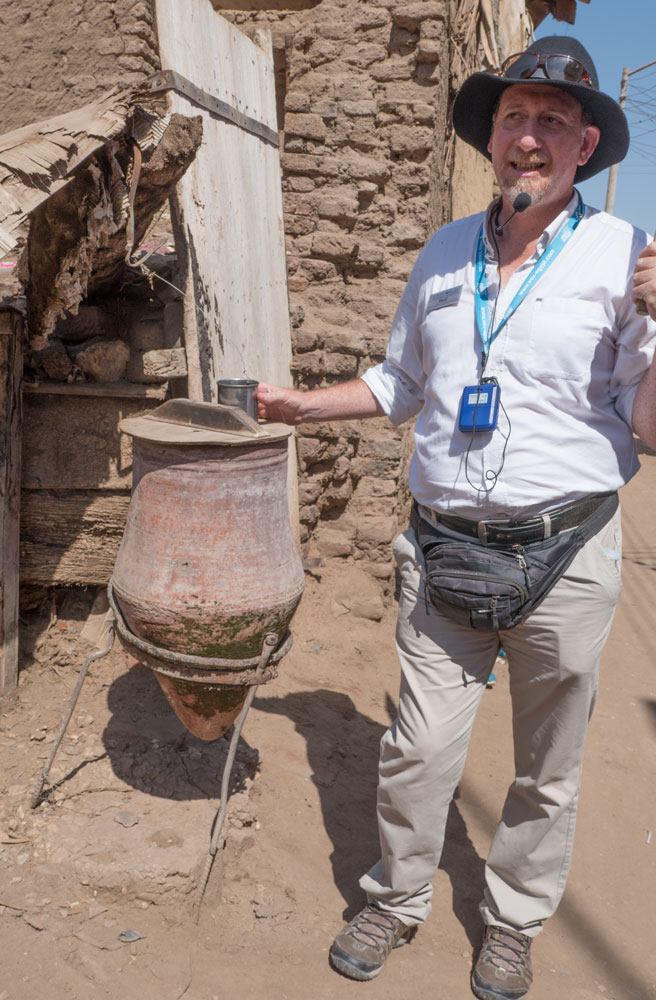
Another example of water containers available to all.
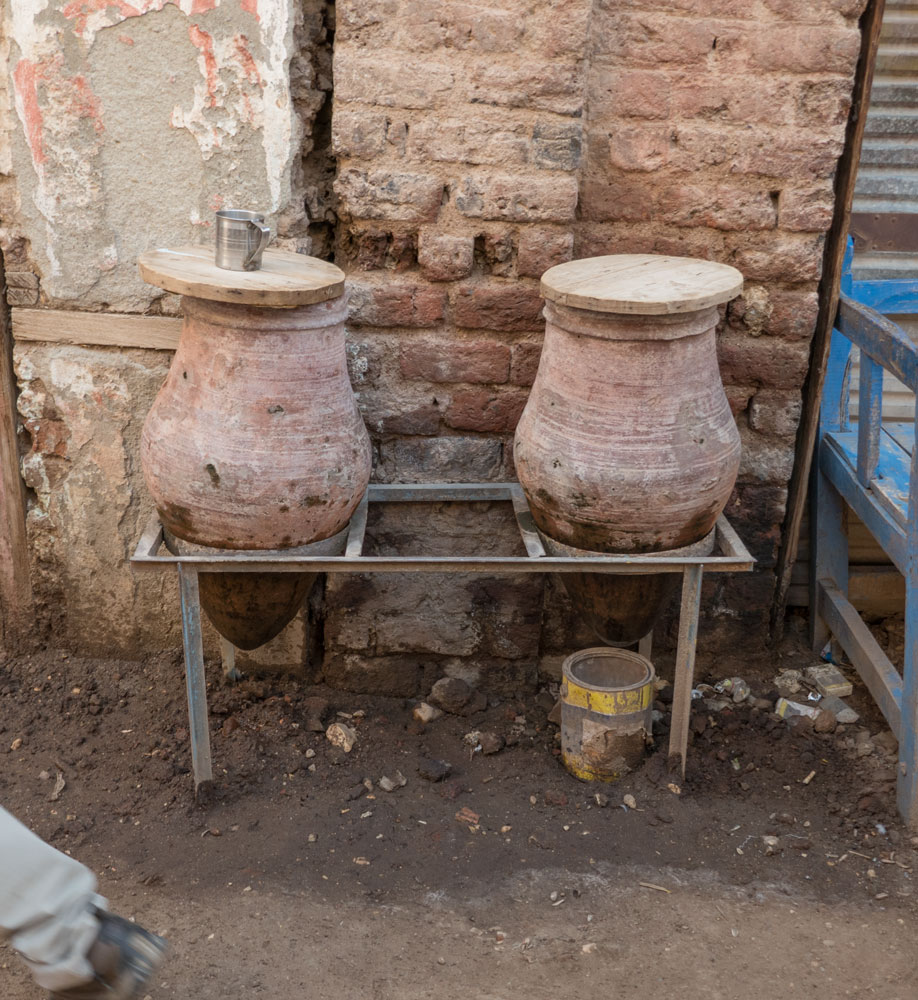
A woodworking shop. The equipment is fairly rudimentary. Look at that home-made table saw in the foreground.
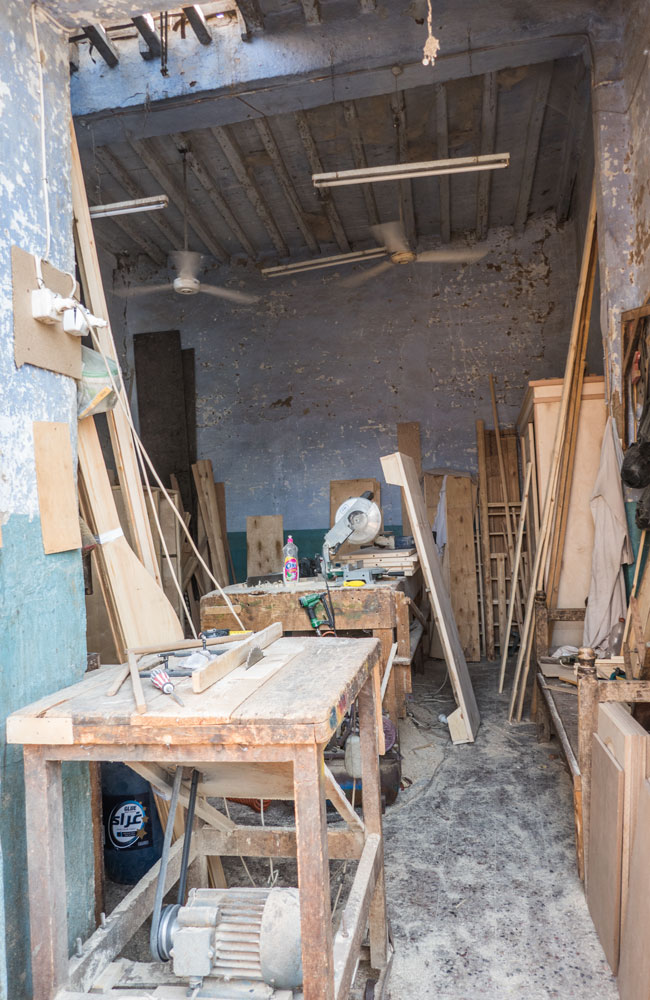
There was a casket maker in the village.

As we were at the dock, this father was stopped by the police to let us cross the street. You can see that they enjoyed having their picture taken. Note that he's smoking a cigarette while driving the motorcycle, with his two children on the bike.
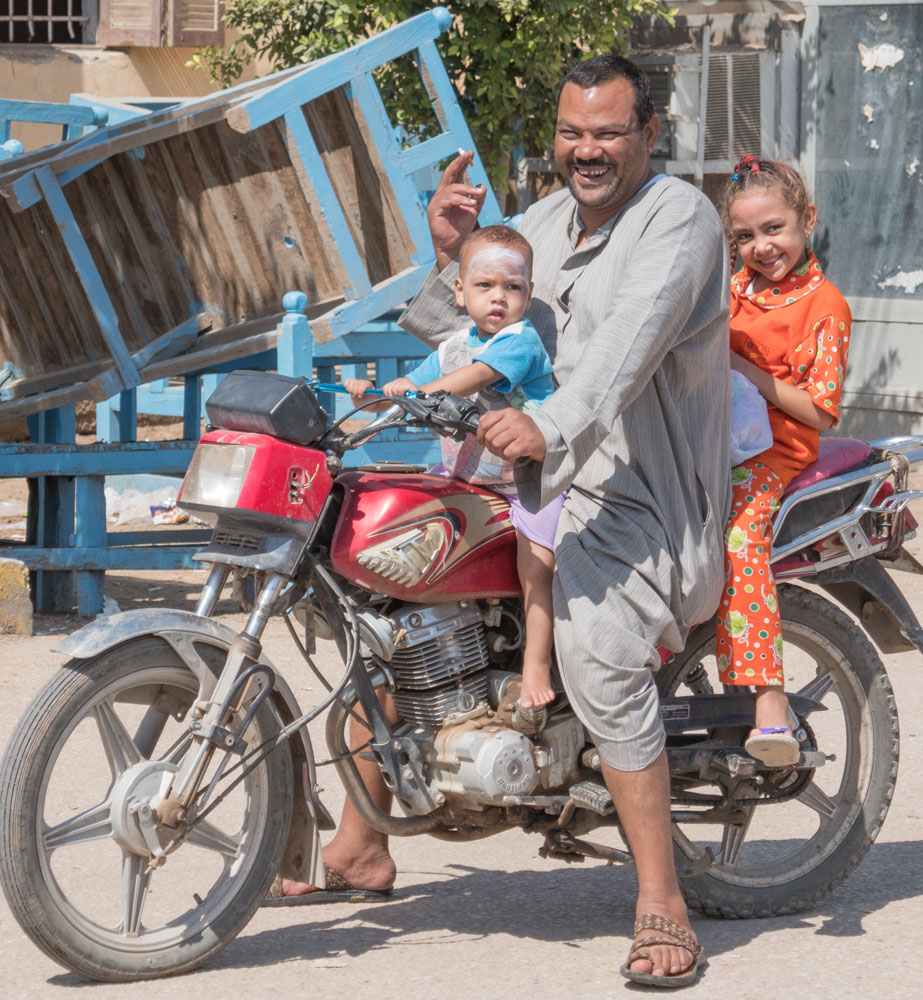
The boat went on to Luxor and we had a quiet afternoon. At 5:30 there was a meeting about disembarkation - we leave the boat tomorrow - and then dinner. Here's our "Three Uniworld Amigos" during the final evening get-together.
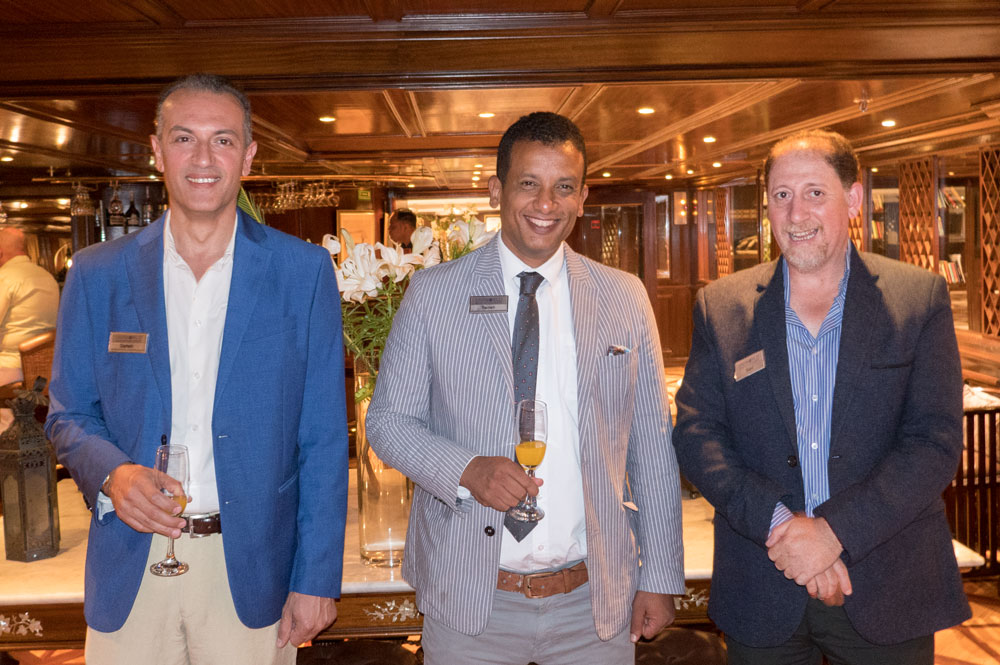
We'll go to the airport to fly to Cairo tomorrow morning, and we'll stay at the Four Seasons again. The big event coming Tuesday is a visit to the Great Pyramid of Giza.
Our adventure continues here